24 Hours Hotline: +86 137-3541-1378
Email:shanghai@tripstoshanghai.com
24 Hours Hotline: +86 137-3541-1378
Email:shanghai@tripstoshanghai.com
Tour Style:
Embark on an unforgettable journey with our China luxury tour from Australia, designed to offer an exclusive and immersive experience through China’s most iconic destinations. From the historical wonders of Beijing, including the majestic Great Wall and the Forbidden City, to the ancient marvels of Xi’an, such as the Terracotta Warriors, this tour blends cultural exploration with unparalleled luxury. Cruise the tranquil Yangtze River, marvel at the stunning landscapes of Zhangjiajie, and immerse yourself in the modern vibrancy of Shanghai, all while enjoying world-class accommodations, gourmet cuisine, and personalized service. Our luxury tours China from Australia provide a seamless travel experience with expert guides and private transport, ensuring you witness China’s rich history, awe-inspiring natural beauty, and vibrant culture in the most luxurious way possible.
Duration: 14 Days, 13 Nights
Attractions(Cities):
Beijing, Xi'an, Chongqing, Yangtze River Cruise, Zhangjiajie, Shanghai
Pick-up point:
Beijing International Airport (based on your requirement)
Finishing point:
Shanghai International Airport (based on your requirement)
Tour Customizable:
Absolutely! (Tell us your specific requirements in the inquiry)
Payment Types:
Cash, Wire, Paypal, WesternUnion, Wechat, Alipay, Bank Transfer
Available: Daily
Day 1 Australia-Beijing: Fly to Beijing from Australia
Day 2 Beijing: Temple of Heaven, Tiananmen Square, Forbidden City, Nanluoguxiang Hutong
Day 3 Beijing: Badaling Great Wall, Summer Palace
Day 4 Beijing-Xi'an by Bullet Train: Train to Xi'an, Ancient City Wall, Drum Tower, Bell Tower
Day 5 Xi'an: Terracotta Warriors and Horses Museum, Huaqing Pool
Day 6 Xi'an-Chongqing by Bullet Train: Train to Chongqing
Day 7 Chongqing: Ciqikou Ancient Town, Jiefangbei, Kuixing Building, Liziba Station, Hongya Cave
Day 8 Yangtze River Cruise: Three Gorges Museum, Longmen Hao old Street, Shore Excursion to Fengdu Ghost City
Day 9 Yangtze River Cruise: Three Gorges & Shennv Stream
Day 10 Yichang-Zhangjiajie by Car: Yangtze River Cruise to Yichang, Car to Zhangjiajie
Day 11 Zhangjiajie: Zhangjiajie National Forest Park, Yuanjiajie, Tianzi Mountain
Day 12 Zhangjiajie-Shanghai by Flight: Zhangjiajie Grand Canyon, Flight to Shanghai
Day 13 Shanghai: Yuyuan Garden & Bazaar, Old French Concession, the Bund, Zhujiajiao Water Town
Day 14 Shanghai Departure
Upon arrival at Beijing Capital International Airport or Daxing International Airport, your personal guide will be waiting, holding a sign displaying “Your Way Holiday”. They will help with your luggage and escort you to your downtown hotel for check-in. Take this opportunity to unwind in the comfort of your room, catch up on some rest, or venture out into the surrounding area to soak in the local atmosphere. Wander through nearby alleys to glimpse traditional Beijing life, browse local shops, or simply sit in a cozy café to observe the city's rhythms. These initial explorations not only offer a taste of China's rich culture but also allow you to stretch your legs and recharge after the long flight, ensuring you're refreshed and ready to embrace the exciting adventures that lie ahead. In the evening, your guide will recommend an authentic local restaurant for dinner, where you can savor dishes like braised pork ribs or Beijing noodles with soybean paste. After a satisfying meal, they will accompany you back to the hotel, giving you time to further adjust to the time difference and prepare for the days of exploration to come.

Breakfast is served at the hotel, with a selection of Chinese and Western options to suit different tastes. After breakfast, the guide will meet you in the lobby and start the day’s tour with the Temple of Heaven, pausing at the entrance to outline its role in imperial ritual before leading you inside. With a history spanning over 600 years, constructed during the reign of Emperor Yongle of the Ming Dynasty (1406-1420), the Temple of Heaven served as the exclusive venue for imperial heaven-worshipping ceremonies and prayers for bountiful harvests throughout the Ming and Qing dynasties—over 500 years of imperial rule. The complex follows strict cosmological principles that the guide will elaborate on: circular structures (representing heaven) like the Hall of Prayer for Good Harvests and Circular Mound Altar stand on the northern axis, while square buildings (symbolizing earth) such as the Fasting Palace lie to the south. Beside the Hall of Prayer for Good Harvests, the guide will detail its architectural marvels—its triple-eaved, blue-tiled circular roof rising 38 meters without a single nail, supported by 28 massive wooden pillars, with 12 representing the 12 months, 12 the 12 two-hour periods of the day, and 4 the four seasons. As a UNESCO World Heritage Site inscribed in 1998, the guide will note its global recognition for unparalleled architectural artistry and its role as a living repository of China’s imperial ritual culture, sharing how it still hosts traditional ceremonies during major festivals like the Winter Solstice.
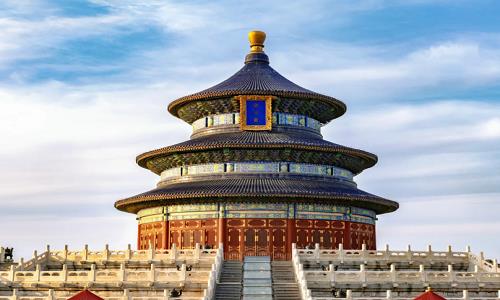
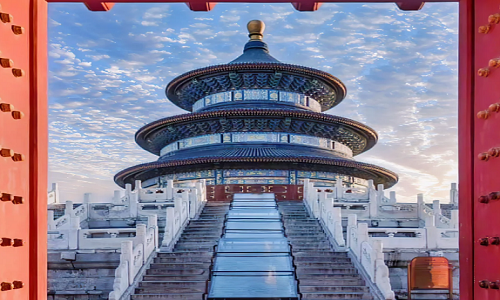
Next, the guide will lead you to Tiananmen Square, walking slowly and pointing out landmarks as you enter the square. Covering 440,000 square meters at Beijing’s geographical and political heart, it is the world’s largest urban public square and a tangible chronicle of modern China’s journey. The guide will highlight the spot where Mao Zedong proclaimed the founding of the People’s Republic of China on October 1, 1949, marking the end of decades of war and the birth of a new nation. He will explain the significance of each surrounding landmark: the Tiananmen Tower, with its iconic portrait of Mao Zedong, once the main entrance to the Forbidden City and now a symbol of national sovereignty; the 37.9-meter-high Monument to the People’s Heroes, inscribed with revolutionary epics honoring martyrs from the Opium War to the Chinese Civil War; the Great Hall of the People, a colossal structure hosting national assemblies and state banquets, with interiors adorned with traditional paintings and carvings; and the Mausoleum of Mao Zedong, where visitors pay their respects to the nation’s founding leader. The guide will also mention the daily flag-raising and lowering ceremonies, synchronized with sunrise and sunset, as a display of national pride that draws crowds of locals and tourists alike, with soldiers marching in precise formation to the square.
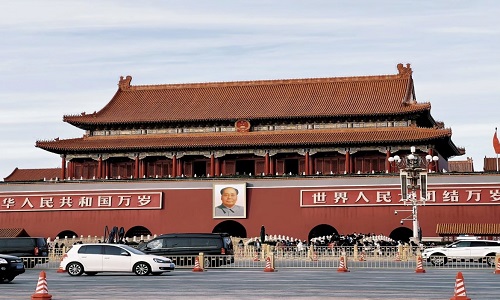
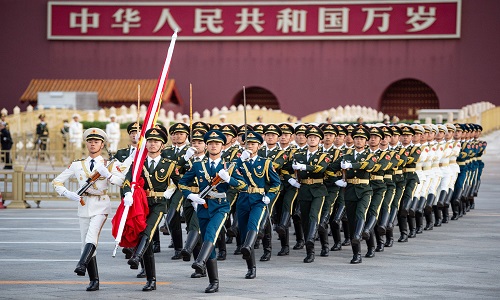
You’ll enjoy a meal featuring local specialties, with the guide introducing classic Beijing dishes to try. Peking duck, a world-famous staple, is served with thin lotus leaf pancakes, slivered scallions, cucumber, and sweet bean sauce—each component balanced to highlight the duck’s crispy skin and tender meat. Another option is shredded pork with garlic sauce, a savory-sweet dish with tender pork, wood ear mushrooms, and bamboo shoots tossed in a sauce made from soy sauce, vinegar, and garlic, showcasing the bold flavors of Beijing cuisine.
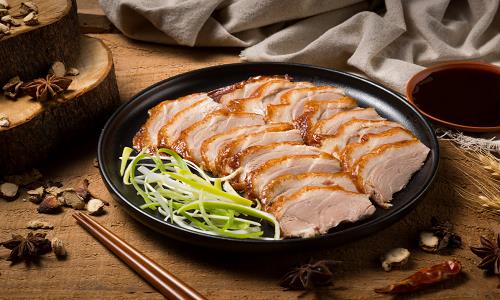
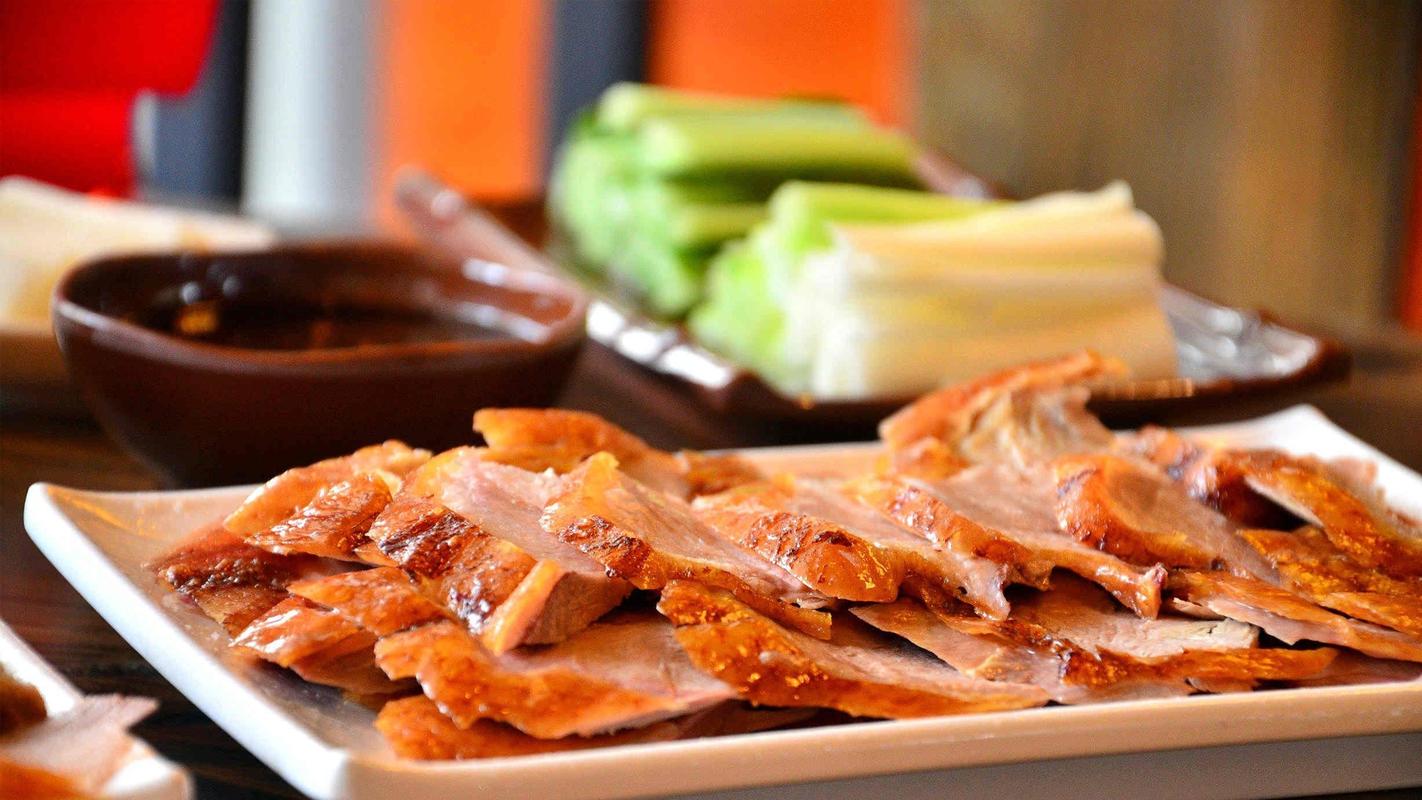
After lunch, you will enter the Forbidden City (Palace Museum) through Tiananmen Tower, with the guide leading the way and handing out simplified maps of the complex. Serving as the imperial palace from 1420 to 1912, it was home to 24 emperors of the Ming and Qing dynasties, and today stands as the world’s largest and best-preserved ancient wooden architectural complex, a UNESCO World Heritage Site since 1987. Spanning 720,000 square meters with over 9,000 rooms, the guide will clarify its division into the Outer Court (for state affairs) and Inner Court (royal living quarters) as you walk through the Meridian Gate, the imposing main entrance adorned with five arches symbolizing imperial hierarchy. At the Hall of Supreme Harmony, the guide will describe its role in coronations, Lunar New Year celebrations, and imperial weddings, pointing out the dragon-carved throne (symbolizing imperial authority) flanked by golden cranes (representing longevity) and incense burners. Moving to the Hall of Central Harmony, the guide will share how emperors rested here before ceremonies and reviewed official documents, while at the Hall of Preserving Harmony, he will explain its dual use for imperial examinations (where scholars competed for government positions) and banquets honoring foreign envoys. In the Inner Court, the guide will recount stories of imperial life at the Palace of Heavenly Purity—once the emperor’s bedroom, later an audience hall—including tales of concubines’ hierarchy, royal court rituals, and the intrigue that often unfolded behind closed doors. Along the way, he will direct your attention to priceless relics: Song Dynasty calligraphy by masters like Su Shi, Ming Dynasty blue-and-white porcelain from Jingdezhen, and Qing Dynasty jade carvings of dragons and phoenixes, noting the museum’s 1.8 million-strong collection that makes it a treasure trove of Chinese civilization.
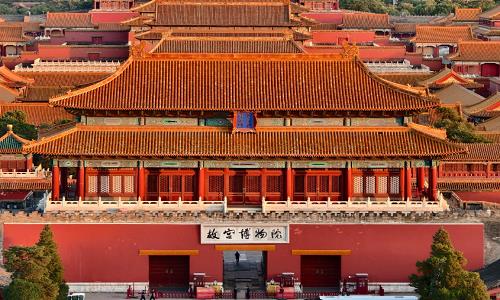
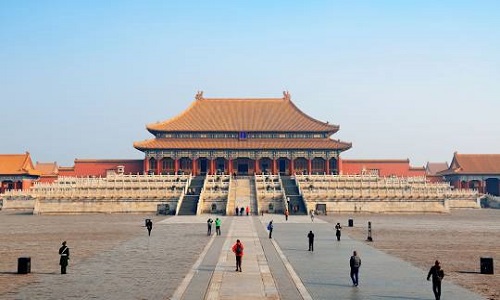
In the afternoon, the tour moves to Nanluoguxiang Hutong, an 800-meter lane dating to the Yuan Dynasty (1271-1368) and one of Beijing’s oldest preserved hutongs. The guide will explain that hutongs are narrow alleys formed by siheyuan (courtyard houses)—the soul of old Beijing—as you enter the lane. He will point out gray-tiled siheyuan with red-painted doors, highlighting brass knockers shaped like lions or turtles (symbols of good fortune and longevity) and explaining the courtyard layout: four buildings enclosing a central space, with the main house facing south for optimal sunlight and smaller wing houses for children or servants. The guide will share how these courtyards fostered tight-knit communities, where neighbors shared meals during festivals, helped each other with chores, and celebrated life’s milestones together. As you wander, he will point out traditional shops selling handcrafted paper-cuts (depicting scenes from Chinese mythology) and silk fabrics dyed with natural pigments, alongside modern cafes serving specialty coffee and boutique bookstores focusing on Chinese literature. He will also recommend must-try snacks: sugar-fried chestnuts roasted over charcoal (a winter favorite), stinky tofu fermented with a brine of bamboo shoots and mushrooms (an acquired taste with deep umami), and “jianbing” (savory crepes cooked on a griddle, topped with scallions, chili sauce, and crispy crackers). The guide will lead you to a hidden century-old tea house, where locals still gather to play chess, sing Peking Opera, and sip jasmine tea, describing how such spots have preserved hutong culture amid Beijing’s rapid modernization.
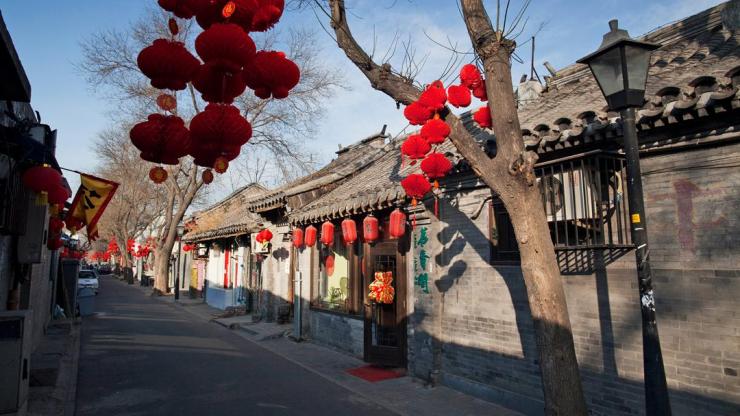
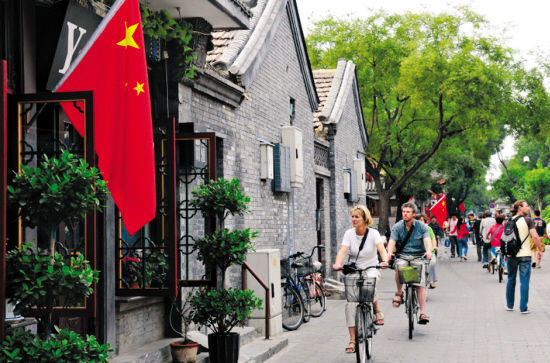
For dinner, you can either explore Nanluoguxiang’s food stalls independently (using the guide’s marked recommendations) or follow him to a restaurant specializing in Beijing folk dishes like stewed donkey meat (tender and seasoned with star anise) or “mazhaguo” (fried dough mixed with vegetables and spices, a hearty street food staple). After dinner, the guide will send you back to the hotel. Today’s journey through Beijing’s imperial past and traditional present has woven together history, architecture, and cuisine, leaving you with a vivid understanding of why the city remains a cornerstone of Chinese culture.
Breakfast is served at the hotel, with a mix of Western and Chinese options to accommodate different preferences. After breakfast, the guide will accompany you to the Badaling Great Wall, sharing facts about its construction during the drive. As a UNESCO World Heritage Site (1987), it is the most renowned section of the Great Wall, built primarily in the Ming Dynasty (1368-1644) on the foundations of earlier Qin and Han Dynasty walls. Perched atop Jundu Mountain at 1,015 meters, the guide will note its nickname “Key to the Northern Capital” for its strategic role in guarding the northern approach to Beijing. He will explain the Great Wall’s status as a global engineering marvel—stretching over 21,000 kilometers across deserts, mountains, and plains, constructed over 2,000 years to fend off nomadic invasions from the north. At the wall’s entrance, the guide will point out its robust structure: 7.8-meter-high walls crafted from large granite blocks and fired bricks, with a top width of 5.8 meters—enough for ten soldiers to march abreast or five horses to gallop side by side. He will describe the beacon towers positioned every 500 meters, explaining how soldiers used wolf dung bonfires here to send military signals: one fire for enemy scouts, two for a small invading force, and three for a large army, allowing rapid communication across hundreds of kilometers. As you climb the wall’s stone steps, the guide will share stories of its construction: how workers transported massive stones up steep mountain slopes using ropes, rollers, and human labor, and how soldiers stationed here lived in harsh conditions, surviving on dried grain, pickled vegetables, and water stored in clay jars. He will pause at a watchtower to point out the panoramic views of pine-covered mountains stretching to the horizon, linking the sight to the wall’s symbolism as a testament to the Chinese nation’s resilience and unity.
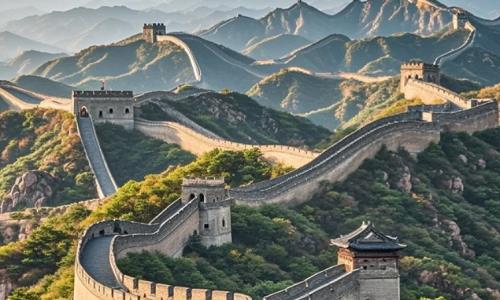
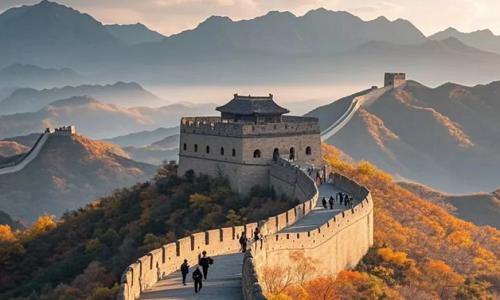
By noon, you’ll stop for lunch, where the guide will recommend regional specialties that reflect the area’s historical role as a travel hub. Fried sauce noodles (“zha jiang mian”)—thick wheat noodles tossed with a rich sauce of minced pork, fermented soybean paste, and diced vegetables—were a staple for laborers building the wall, offering hearty sustenance. Braised pork rice (“lu rou fan”), with tender pork belly cooked in soy sauce, sugar, and star anise over low heat, is another comforting option, with roots in the rural communities surrounding the Great Wall. The guide will note that these dishes have changed little over centuries, offering a taste of the past.
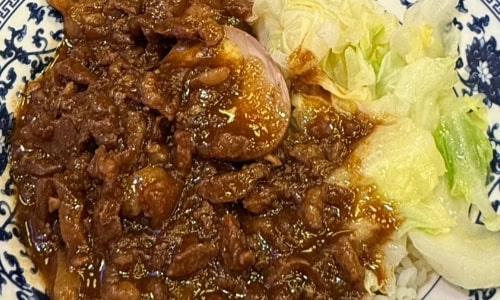
In the afternoon, the guide will take you to the Summer Palace, China’s largest and best-preserved imperial garden and a UNESCO World Heritage Site (1998). The guide will outline its layered history en route: originally built in the Jin Dynasty (1115-1234) as a royal retreat, expanded during the Yuan and Ming dynasties, and extensively renovated by Empress Dowager Cixi in the late Qing Dynasty using funds diverted from the imperial navy—a controversial decision that became a symbol of the dynasty’s decline. Covering 290 hectares, three-quarters of which is Kunming Lake (a man-made lake modeled after Hangzhou’s West Lake), the guide will emphasize its “naturalism” design philosophy, where artificial structures blend seamlessly with natural landscapes to create a sense of “borrowed scenery” from the surrounding mountains. The guide will lead you to the Long Corridor, a 728-meter covered walkway that is one of the longest of its kind in the world, pointing out the over 14,000 paintings adorning its beams and ceilings—each depicting historical stories, folk tales, landscapes, or flowers, with no two paintings repeated. He will explain that the corridor was built to allow royals to walk between buildings without being exposed to sun or rain, and that many of the paintings were restored in the 20th century to preserve their original beauty. At the Tower of Buddhist Incense, a 41-meter-tall pagoda perched atop Longevity Hill, the guide will help you spot key views of the lake and gardens, sharing that it was a major site of imperial worship, where emperors and empresses prayed for peace and prosperity. He will recount the irony of the Marble Boat, a stone pavilion with a wooden deck built on the lake’s shore: it was designed to symbolize the “eternity” of the Qing Dynasty, yet was completed just decades before the dynasty collapsed in 1912. The guide will also explain Kunming Lake’s distinctive features: its western bank lined with willow trees (planted to mimic the scenery of the Yangtze River delta), the Seventeen-Arch Bridge connecting the eastern shore to Nanhu Island (adorned with 544 stone lions, each with a unique expression), and the Bronze Ox statue at the northern bank (cast in 1755 to symbolize the taming of water). He will suggest a boat ride on the lake—a favorite pastime of the imperial family—to experience the garden from the water, noting how the pagodas, bridges, and trees reflect perfectly on the surface, creating a scene that mirrors traditional Chinese landscape paintings.
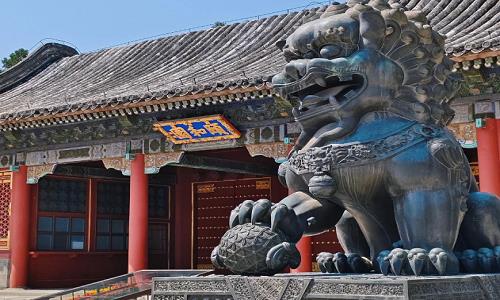
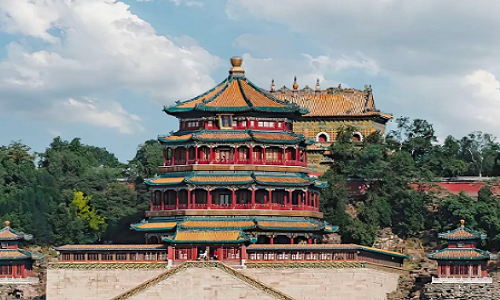
For dinner, the guide will recommend a restaurant near the Summer Palace, explaining the origins of signature dishes as you eat. “Sweet and sour carp” is a classic northern Chinese dish, with the carp symbolizing abundance; it is deep-fried to crisp the skin, then coated in a tangy sauce of sugar, vinegar, and tomato. “Beggar’s chicken” has a colorful legend: it was said to have been invented by a beggar who wrapped a stolen chicken in lotus leaves and mud, then baked it in a campfire—today, it is prepared by marinating the chicken in soy sauce and wine, wrapping it in lotus leaves and clay, and baking until the meat falls off the bone. As the sun begins to set, your guide will accompany you on the journey back to the hotel, ensuring a smooth and relaxing end to your day. During the ride, they might share a few final thoughts or helpful info for tomorrow’s plans. Settling into your room, you’ll look back on a day full of exploration and connection with Beijing’s cultural heartbeat. Thanks to the guide’s rich storytelling and attention to detail, you’ll walk away with more than just photos—you’ll carry a genuine appreciation for the layers of history, beauty, and tradition you experienced. With the upcoming trip to Xi’an ahead, tonight offers the perfect moment to rest and recharge after a day that blended discovery, flavor, and unforgettable sights.
Travel Tip: Tomorrow you'll take the high-speed train to Xi'an. Your guide will remind you to pack lightly for the 4-5 hour journey. They'll also remind you that you'll need your passport at check-in and recommend wearing comfortable shoes for exploring the sights upon arrival.
Breakfast is served at the hotel, with quick and convenient options to suit the morning’s travel schedule. Your morning begins with a ride on a high-speed train bound for Xi’an, a city steeped in layers of history and culture. With its modern comforts—spacious seats, on-board Wi-Fi, and clean facilities—and smooth service, the train makes the journey both easy and enjoyable. During the ride, you can gaze out the window at the shifting northern Chinese landscape: endless wheat fields that turn golden in the sun, small villages with gray-tiled roofs clustered beside rivers, and occasional ancient pagodas peeking above tree lines. Once you arrive at Xi’an North Railway Station, your guide will be there to meet you, holding a “Your Way Holiday” sign to make the connection effortless. After a warm welcome, he’ll lead you to the waiting transport and head straight into the heart of the city for the day’s explorations. The first stop takes you to the Ancient City Wall, where your guide will introduce the rich history and deep cultural roots of Xi’an, setting the tone for what lies ahead. Shifting from the dynamic pace of Beijing to Xi’an’s timeless charm marks a meaningful transition in your cultural adventure through China.
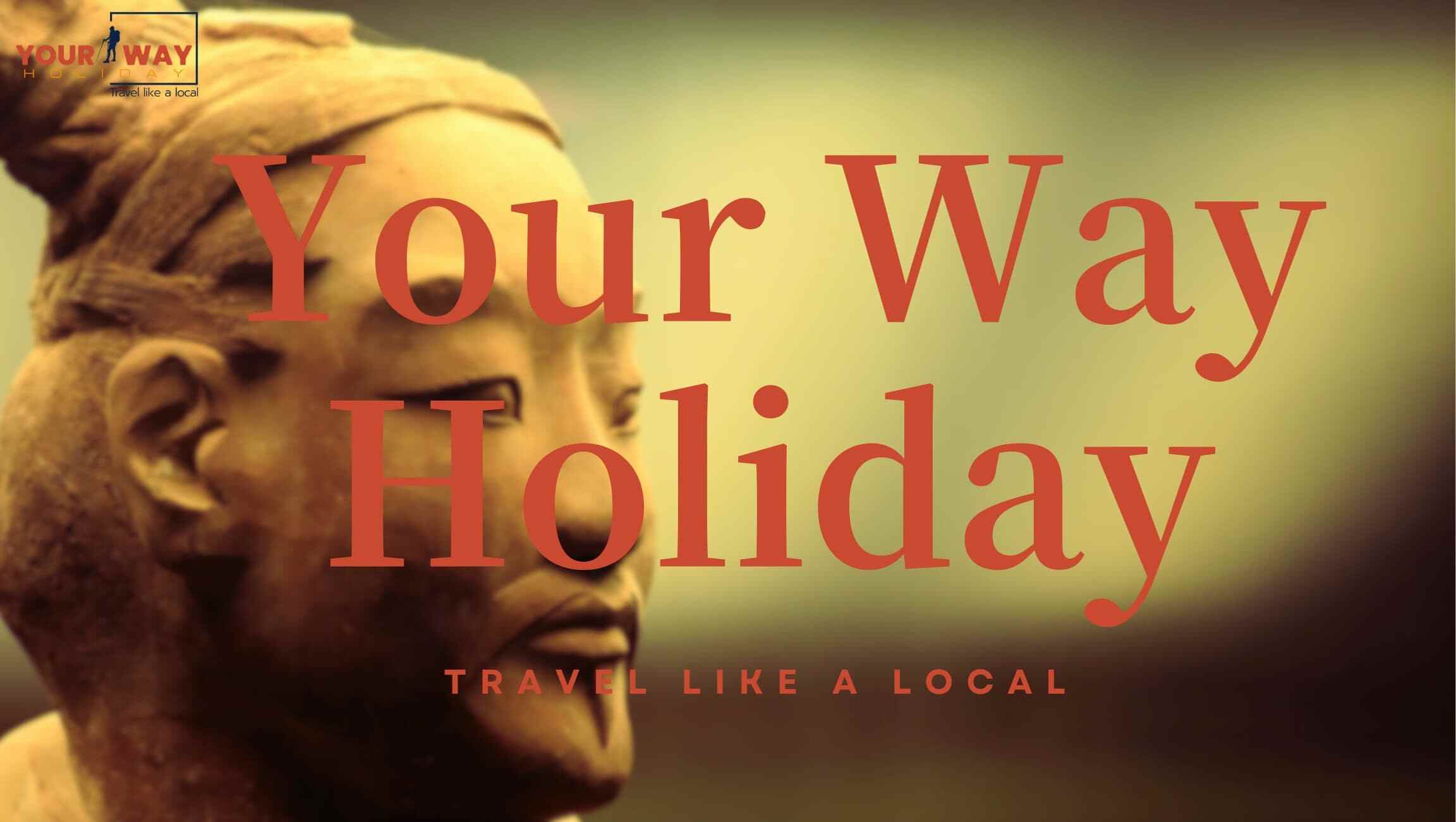
First constructed in the Sui Dynasty (581-618) and expanded during the Ming Dynasty (1368-1644), this wall surrounds Xi’an’s old city with a circumference of 13.7 kilometers, making it the most intact ancient city wall in China and a core symbol of the city’s status as a capital of 13 dynasties. The wall’s design reflects rigorous military strategy: it stands 12 meters high, with a top width of 15-18 meters—enough for five horses to gallop abreast or ten soldiers to march side by side. As you walk along the wall, he points out the 98 watchtowers, each originally equipped with archers’ platforms and cannon emplacements, and the crenellated parapets with notched openings for shooting while shielding defenders. Your guide shares stories of how the wall protected Xi’an during battles, such as the An Lushan Rebellion in the Tang Dynasty, and notes that the surrounding moat—now lined with willow trees and lotus ponds—once held water to form an extra defense line. He also mentions that the wall’s four main gates (East, West, South, North) each have triple-tiered towers, with the South Gate still hosting traditional gate-opening ceremonies on festivals, where performers in Tang Dynasty armor reenact imperial guard rituals. If you choose to rent a bicycle to explore the wall, he adjusts the route suggestion based on your pace, highlighting sections with the best views of both ancient courtyard neighborhoods and modern Xi’an’s skyscrapers.
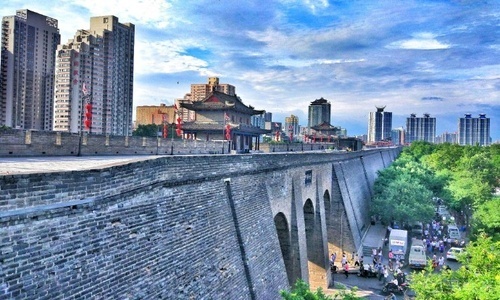
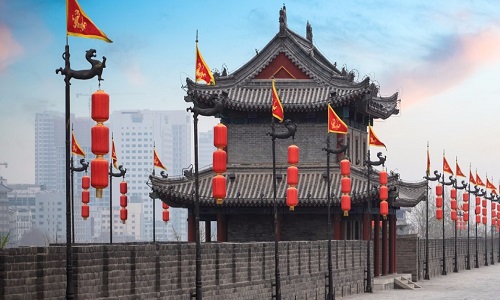
By midday, you stop for lunch, where the guide introduces Shaanxi’s iconic dishes with stories of their origins. Biangbiang noodles—wide, chewy strips tossed in chili oil, minced garlic, fermented black beans, and green onions—get their name from the “biang” sound made when slapping the dough against a wooden board, a technique passed down through generations of noodle makers. He also recommends roujiamo, a crispy bread bun stuffed with slow-braised pork seasoned with star anise, cinnamon, and Sichuan pepper, calling it “China’s oldest hamburger” with a history dating back 2,000 years to the Qin Dynasty, when it was a staple for soldiers and travelers. For a lighter option, he suggests liangpi, cold wheat noodles dressed with vinegar, chili oil, and shredded cucumber, a refreshing dish perfect for Xi’an’s dry climate.
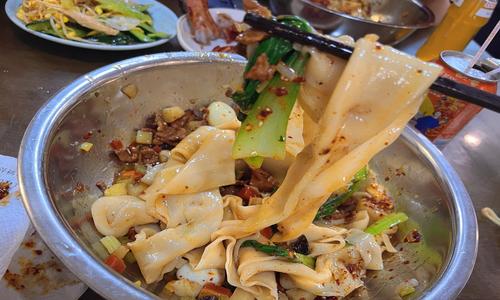
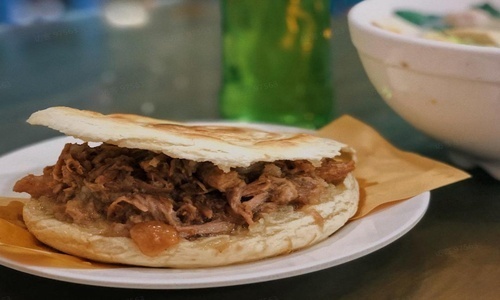
After lunch, the guide leads you to the Drum Tower, a grand wooden structure rising 34 meters in the heart of Xi’an’s old city, adjacent to the Bell Tower. Built in 1380 during the Ming Dynasty, it was once the city’s “timekeeper,” with drums beaten at dusk to signal the closing of city gates and the start of the night curfew. The guide points out the tower’s architectural details: its double-eaved roof covered in green glazed tiles (a color reserved for imperial buildings), the intricate carvings of dragons and phoenixes on the wooden beams (symbolizing imperial power and marital harmony), and the 60 giant pine pillars that support the upper structure without a single nail—testament to Ming Dynasty carpentry skills. Inside, he directs your attention to the collection of 24 drums, each inscribed with a character representing one of the 24 solar terms in the Chinese lunar calendar (such as “Lichun” for the start of spring). He explains that ancient timekeepers beat the drums 108 times at each two-hour interval—nine beats for each of the 12 daily periods—a number considered auspicious in traditional Chinese culture. As you watch the traditional drum performance, he describes how the rhythms vary: slow, deep beats for dusk (signaling calm), and crisp, rapid patterns for festivals (celebrating joy). He also takes you to the tower’s balcony, pointing out the bustling Muslim Quarter below, where the aroma of lamb skewers and osmanthus cakes drifts upward, and shares how the Drum Tower once coordinated with the Bell Tower to regulate daily life in imperial Xi’an—creating a rhythm that kept the city ordered for centuries.
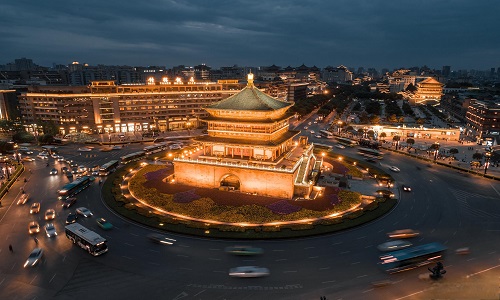
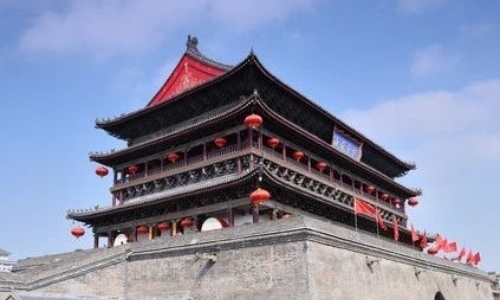
Next, the journey takes you to the Bell Tower, located just a short distance away and equally iconic in Xi’an’s cityscape. Erected in 1384, it was designed to complement the Drum Tower and played an important role in keeping time for the city. Rather than drums, this tower housed a giant bell that would ring at dawn or during significant occasions. As you near the structure, the sheer size and presence of the bell become apparent, and your guide will share captivating stories about its historical function and how it was built. Showcasing classic Ming Dynasty style, the Bell Tower features a tiered design with elegant wooden detailing. Once at the top, you’ll be treated to expansive views of Xi’an, where old alleyways and modern avenues weave together in harmony. Through your guide’s thoughtful explanations, the Bell Tower’s role in the city's past will take on even more meaning.
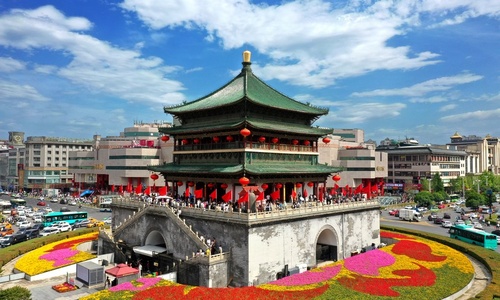
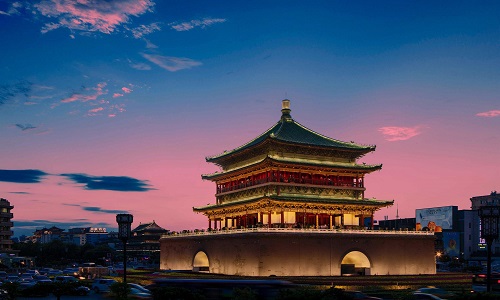
For dinner, the guide offers two curated options to suit different tastes. The first is exploring the Muslim Quarter, where he recommends yangrou paomo (mutton soup with torn bread)—a dish where you tear dried wheat bread into small pieces, then have it simmered in rich mutton broth with radishes and herbs, served with pickled garlic to cut through the richness. He also suggests crispy lamb skewers grilled over charcoal, seasoned with cumin and chili, a specialty of the Hui ethnic group who have lived in Xi’an for centuries. The second option is a family-run restaurant specializing in Qinqiangcai (Qin-style cuisine), where dishes like spicy tofu pudding (douhua) with chili oil and sesame seeds, and braised beef shank with hawthorn (to tenderize the meat) showcase the bold, sour-spicy flavors of Shaanxi. After dinner, he escorts you back to your hotel in Xi’an’s old city, where the quiet streets still retain the charm of ancient Chang’an. Today’s journey from Beijing to Xi’an has been a seamless shift from imperial grandeur to ancient capital heritage, offering a taste of northern China’s diverse history and cuisine.
Breakfast is served at the hotel, with a selection of quick and satisfying options to fuel the day’s explorations. When morning arrives, your guide will meet you in the hotel lobby, ready to kick off another unforgettable day in Xi’an—one that delves into the city’s most iconic ancient wonders. Upon arriving at the Terracotta Warriors and Horses Museum, 35 kilometers east of Xi’an, the guide leads you through the entrance and starts with a sweeping overview of Qin Shi Huang’s reign (221-210 BCE) to set the historical context. He explains that the emperor unified China for the first time, ending the Warring States period by conquering six rival kingdoms, and standardized writing, currency, and measurements—foundations of modern Chinese civilization. To secure his legacy, he ordered the construction of the Great Wall and a sprawling mausoleum complex, a project that took 700,000 workers over 39 years to complete, drawing laborers from across the empire. The terracotta army, he notes, was built to protect the emperor in the afterlife, reflecting the ancient Chinese belief that the soul continues to exist and requires the same military protection and status as in life—a belief rooted in Confucian and Taoist traditions.
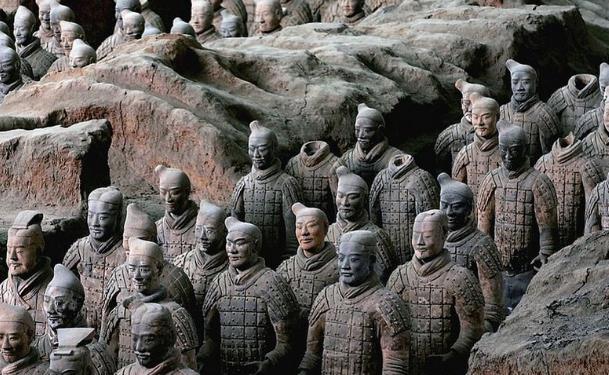
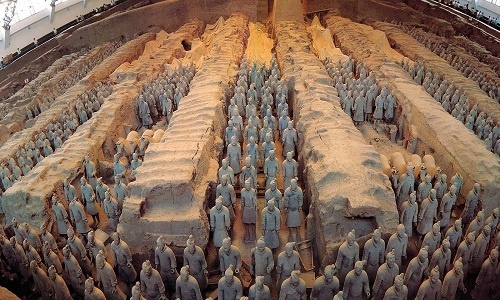
The museum consists of three main pits and an exhibition hall, and your guide starts with Pit 1, the largest and most impressive. As you stand on the viewing platform, he points out the 6,000+ terracotta warriors arranged in battle formation: infantry, archers, charioteers, and generals, each standing 1.8-1.9 meters tall. He emphasizes that no two warriors have the same face—artisans modeled them after real soldiers in Qin Shi Huang’s army, with distinct features, hairstyles, and armor reflecting their ranks. He points out details: generals wear ornate helmets and layered armor, while foot soldiers have simpler headgear; some warriors have beards, others are clean-shaven; a few even have traces of original paint (mostly faded, but some patches of red and blue remain). He explains that the warriors were originally painted with mineral pigments, but exposure to air caused the paint to flake off within minutes of excavation—archaeologists now use special techniques to preserve remaining pigments.
Moving to Pit 2, the guide presents it as the “elite unit” of the army, where cavalry, chariots, and crossbowmen are arranged in a more complex formation. The terracotta horses, each life-sized with detailed manes and harnesses, are pointed out, along with the observation that cavalry soldiers are positioned with one foot on the ground and one on the stirrup, demonstrating the Qin Dynasty’s advanced horse-riding technology. Pit 3, smaller than the others, is identified as the “command center,” housing only 68 warriors and a chariot, likely the location of the army’s generals. The guide shares that archaeologists believe there are more pits yet to be excavated, as the mausoleum itself—with its legend of mercury rivers and precious jewels—remains unopened to protect its contents. In the exhibition hall, the guide showcases rare artifacts: a bronze sword with a chromium coating that has remained rust-free for 2,000 years, bronze chariot parts with intricate engravings, and terracotta figures in various stages of restoration. The museum’s ongoing work is highlighted, with artisans spending months reconstructing each warrior from hundreds of fragments. The guide also notes the site’s UNESCO World Heritage status (inscribed in 1987), recognizing it as a masterpiece of ancient Chinese art and a window into Qin Dynasty military, social, and technological history.
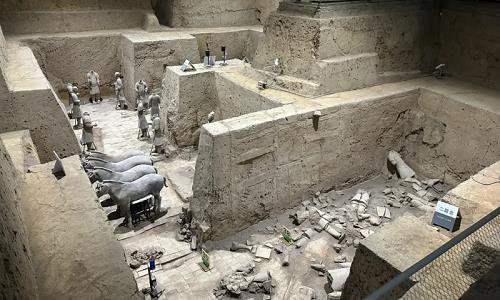
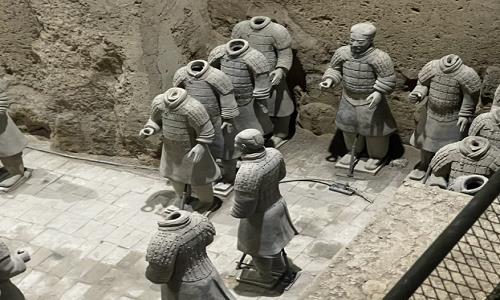
Lunch is served at a rustic restaurant near the museum, where the guide recommends local rural specialties that reflect the area’s agricultural roots. Qinjian noodles—thinner than biangbiang noodles, made by pulling dough into fine strands—are served with a sauce of minced pork, tomatoes, and green peppers, a simple yet flavorful dish that farmers in the region have eaten for centuries. Stewed chicken with chestnuts uses free-range chicken from nearby villages and chestnuts harvested from Lishan Mountain, cooked slowly in a clay pot to create a rich, hearty broth. He mentions that these recipes have changed little over time, offering a taste of the “everyday” cuisine of ancient Qin, in contrast to the imperial feasts of Beijing.
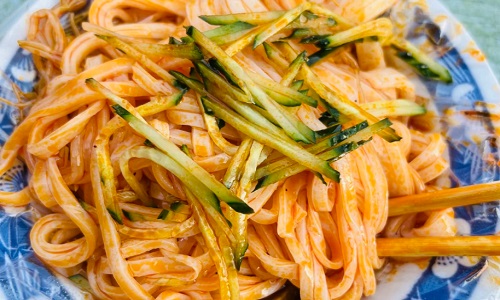
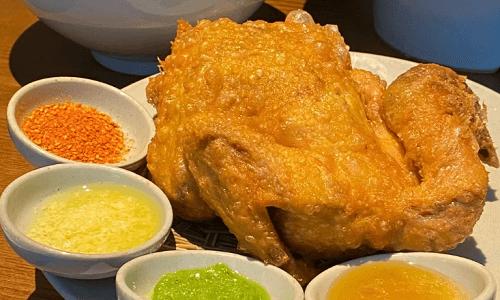
After lunch, your guide takes you to Huaqing Pool, a scenic hot spring resort at the foot of Lishan Mountain, 30 kilometers east of Xi’an. With a history of over 3,000 years, it was a favorite retreat for emperors from the Zhou Dynasty onward, but is most famous for its association with Tang Dynasty Emperor Xuanzong and his concubine Yang Guifei. Your guide leads you through the park, pointing out the natural hot springs that feed the pools—their water stays at 43°C year-round and is rich in minerals like sulfur, believed to have healing properties. He shows you the Nine-Dragon Pool, where Yang Guifei is said to have bathed, with its stone carvings of dragons spouting water, and explains that the pool’s design blends natural scenery with imperial luxury, featuring willow trees, stone bridges, and pavilions. He shares the tragic love story of Emperor Xuanzong and Yang Guifei: their romance was immortalized in poems and operas, but ended with Yang’s death during the An Lushan Rebellion, when soldiers blamed her for the chaos. He points out the Pavilion of Eternal Love, built in their memory, and the Stone Boat, a marble structure where the emperor once hosted banquets. He also highlights the site’s modern history: during the Xi’an Incident in 1936, Chiang Kai-shek was detained here by his generals to force him to form a united front against Japan, and you can see the cave where he hid, now marked with a plaque. As you walk through the gardens, your guide notes the integration of hot springs into the landscape—small pools tucked beside rockeries, and larger pools surrounded by peonies (Yang Guifei’s favorite flower). He explains that Huaqing Pool is not just a historical site but a living cultural space, hosting Tang-style music and dance performances in the evening, where actors in silk costumes recreate imperial banquets.
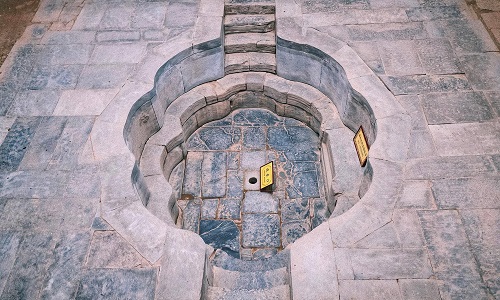
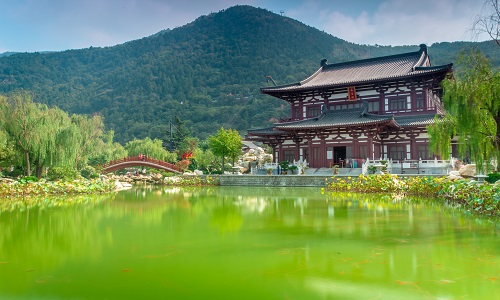
For dinner, your guide recommends a restaurant near Huaqing Pool that specializes in Tang-inspired cuisine. He suggests dishes like osmanthus cake steamed with hot spring water, and braised fish in sweet and sour sauce, a recipe said to have been favored by Yang Guifei. As the day draws to a close, you’ll return to your hotel to unwind and reflect on your experiences in Xi’an. Today has woven together history, culture, and local flavors, leaving you with a rich appreciation of this timeless city and its lasting traditions.
Waking up this morning, you’ll prepare to board a high-speed train bound for Chongqing. China’s impressive high-speed rail network ensures that the trip from Xi’an to Chongqing is both quick and hassle-free. During the journey, you can relax comfortably while taking in the passing landscapes on the way to one of China’s most vibrant cities. Arriving at Chongqing’s train station, your guide will be there to welcome you, holding a “Your Way Holiday” sign. Following a friendly introduction, they’ll help you with a smooth transfer to your hotel. This train ride provides a perfect chance to rest and anticipate the exciting adventures ahead in Chongqing.

Breakfast is served at the hotel, with a selection of Chinese and Western options to fuel the day’s explorations. At the start of the morning, your guide meets you in the hotel lobby, ready to kick off an exciting day exploring the highlights of Chongqing—affectionately called the “Mountain City” for its rugged, slope-lined terrain. Your first stop is the picturesque Ciqikou Ancient Town, a 1,000-year-old riverside settlement nestled along the Jialing River, once a vital port on the ancient Tea-Horse Road that linked Sichuan to Tibet and Southeast Asia. As you wander its narrow, twisting stone lanes, the guide shares stories of its former life as a bustling trading hub: during the Ming and Qing dynasties, merchants flocked here to trade salt, tea, and porcelain, with boats lining the docks and warehouses overflowing with goods. He points out the town’s well-preserved wooden stilt houses (diaojiaolou), their overhanging eaves covered in gray tiles and adorned with red lanterns—architecture adapted to Chongqing’s hilly landscape to maximize space and avoid flooding.
Nowadays, Ciqikou remains vibrant, filled with traditional teahouses where locals sip jasmine tea and listen to Sichuan opera, quaint craft shops selling hand-woven bamboo baskets and hand-painted opera masks (each mask’s color symbolizing a character’s personality—red for loyalty, white for treachery), and street vendors offering local snacks. The guide will direct you to a decades-old stall to sample “douhua” (soft tofu pudding) served with chili oil, scallions, and Sichuan pepper, and “tangyuan” (glutinous rice balls) stuffed with black sesame paste—snacks that have been sold here for generations, with recipes unchanged since the Qing Dynasty. He will lead you to the Baolun Temple, a Tang Dynasty Buddhist temple with a 12-meter-tall stone pagoda that once guided river boats safely to shore, explaining that the temple’s incense has burned continuously for over 800 years, even surviving wars and natural disasters. Throughout your stroll, the guide will provide captivating insights into the culture and traditions that have shaped Ciqikou: how residents celebrate the Dragon Boat Festival by racing boats on the Jialing River, with teams wearing traditional Tujia costumes and drumming to coordinate their strokes; and how Tujia ethnic groups in the area preserve ancient crafts like batik dyeing, using indigo leaves and wooden stamps to create patterns of flowers and mythical creatures.
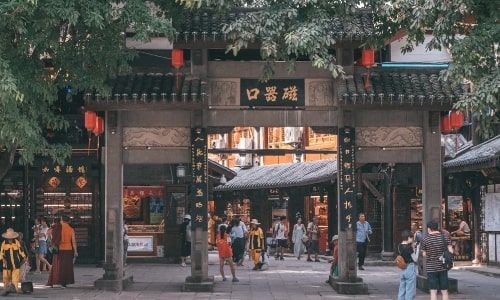
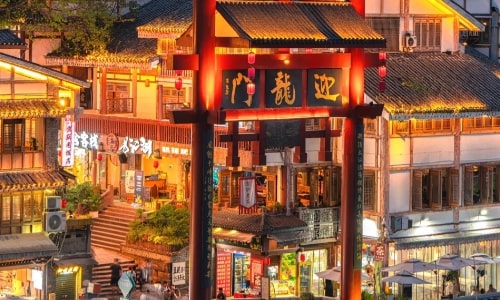
When lunchtime arrives, you’ll be taken to a local eatery to savor Chongqing’s renowned dishes. Known for bold and spicy flavors, the city’s hotpot is a must-try, featuring a rich, fiery broth loaded with meats, vegetables, and spices. The signature Chongqing hotpot stands out with its numbing Sichuan peppercorns and abundant chili peppers, creating a memorable taste experience. Your guide will share tips on how to enjoy the spicy yet savory flavors to the fullest. Besides the hotpot, you’ll also sample regional favorites such as dumplings stuffed with minced pork and vegetables, along with the famous “Chongqing noodles,” a spicy noodle dish that’s sure to leave you wanting more. This meal offers a genuine taste of the region’s culinary heritage, making for a truly delicious and unforgettable dining moment.
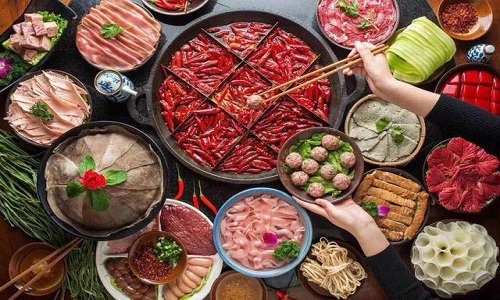
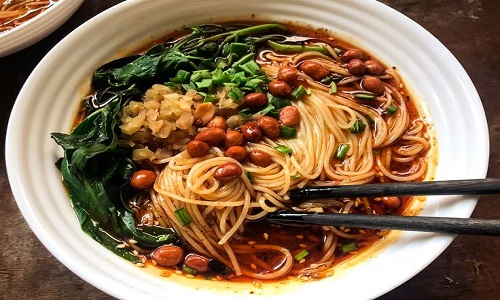
Following this, your guide will take you to Jiefangbei, the bustling commercial core of Chongqing. This district perfectly mixes modern skyscrapers and shopping centers with historic landmarks. Here, the city’s vibrant energy is palpable as locals hustle through busy streets. The guide will explain the significance of Jiefangbei, named after the famous Liberation Monument located in the square. Constructed in 1940, this monument honors the Chinese victory in World War II. As you explore, your guide will highlight notable sites and recount the district’s growth over time. Whether admiring the impressive buildings or soaking up the lively environment, Jiefangbei offers a fascinating glimpse into Chongqing’s cultural and economic heart.
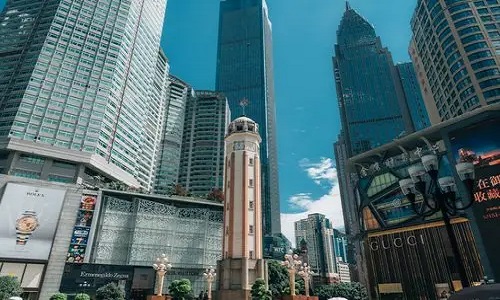
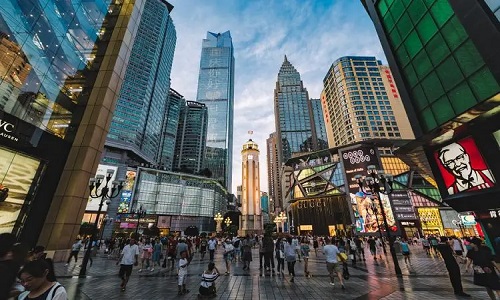
During the afternoon, your guide will escort you to Kuixing Building, a significant historical site that offers insight into Chongqing’s rich cultural heritage. Located centrally in downtown, Kuixing Building showcases the city’s distinctive architectural character. Constructed in the Qing Dynasty to honor Kuixing, the God of Literature, this landmark was meant to protect scholars and encourage learning. Approaching the building, you’ll immediately notice its unique combination of traditional Chinese design alongside contemporary structures. Your guide will narrate the building’s background and cultural importance, highlighting its role in Chongqing’s scholarly traditions. Serving as a symbol of education, the building reflects the city’s deep respect for intellectual achievements. Whether admiring its graceful design or understanding its cultural roots, Kuixing Building offers a captivating glimpse into Chongqing’s past.
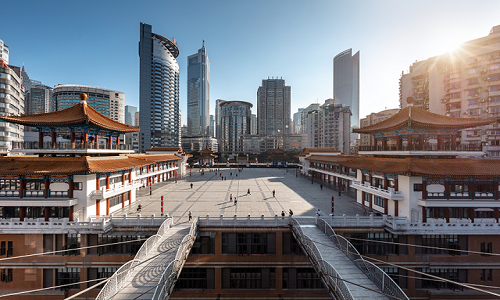
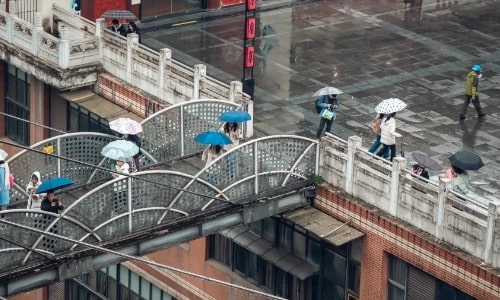
Following this, your journey continues to Liziba Station, one of Chongqing’s most viral engineering marvels and a case study in adaptive urban design. The guide will explain that the station, opened in 2004 after three years of construction, was born out of necessity: Chongqing’s mountainous terrain and dense population (over 30 million in the metropolitan area) left little space for separate transit and residential development, so engineers designed the light rail Line 2 to pass directly through the 19th floor of a 24-story residential building. As you stand on the station’s glass-walled platform, he will point out the structural separation between the rail line and the apartments—1.2-meter-thick soundproofing materials and vibration-dampening technology ensure residents barely hear the trains passing every 3 minutes at speeds of up to 60 kilometers per hour. He will share that architects worked closely with residents during the design phase, relocating only 8 households and offering soundproofing upgrades to those remaining, a collaborative approach that made the project a success. From the platform, you can see the city’s dense residential neighborhoods clinging to the hillsides, with stilt houses (dating to the early 20th century) and modern apartments (built in the 2010s) standing side by side, and the guide will note how this view encapsulates the city’s blend of old and new, where tradition and innovation coexist.
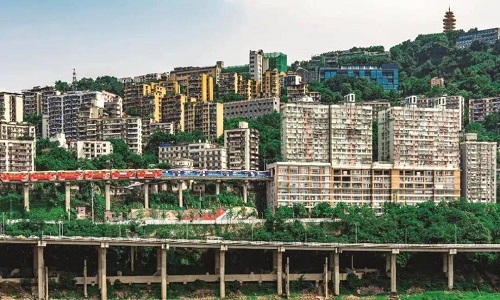
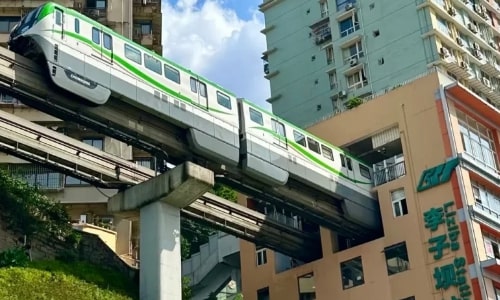
The final stop of the day is Hongya Cave, a riverside complex modeled after traditional Chongqing stilt houses, blending ancient architectural style with modern functions. Built along a cliff face overlooking the Jialing River, it consists of 11 floors connected by stone stairs and elevators, with each floor housing restaurants, bars, shops, and cultural exhibition spaces. The complex is most famous for its night view: thousands of red lanterns hung from the eaves light up at dusk, creating a magical scene reminiscent of the “Floating City” from the animated film Spirited Away. Key attractions within Hongya Cave include the “Chongqing Folk Custom Museum,” which showcases traditional crafts like paper-cutting and wood carving, and the “Diaojiaolou Viewing Platform,” offering panoramic views of the Jialing River and the nearby Qiansimen Bridge. Food options abound, from “spicy crayfish” to “sweet potato noodles,” with many restaurants specializing in river-fresh seafood. Historical context is woven into the design: stilt houses like these have been a part of Chongqing’s architecture for over 1,000 years, originally built by fishermen to stay close to the river while avoiding flooding.
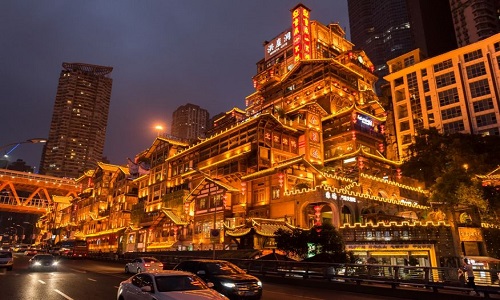
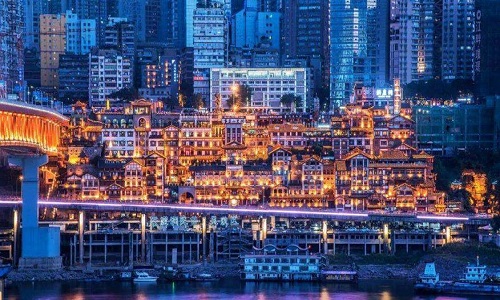
For dinner, the guide will recommend a riverside restaurant in Hongya Cave, where you can enjoy “braised fish head with chili” (a Chongqing specialty, with tender fish soaked in a spicy broth of chili oil, Sichuan pepper, and fermented broad bean paste for 2 hours) and “fermented glutinous rice wine” (sweet and mild, brewed locally using glutinous rice and osmanthus flowers, perfect for balancing spicy flavors) while watching the lantern-lit skyline. Alternatively, he will suggest exploring the street food stalls near Jiefangbei, sampling “spicy tofu skin” (tofu skin marinated in chili sauce and sesame oil) and “fried potato chips with chili powder” (crispy potatoes tossed with Sichuan pepper and five-spice powder) from vendors who have mastered the art of Sichuan spice, often adjusting the heat level based on customer preference. After dinner, he will escort you back to the hotel. Today’s journey through Chongqing has been a deep dive into its dual identity—ancient traditions preserved in stone lanes, stilt houses, and time-honored crafts, and bold innovation in its architecture, engineering, and cuisine—leaving you with a vivid sense of why this mountain city captivates visitors from around the world, offering surprises at every turn of its hilly streets.
Before departing the dock, a visit to the Three Gorges Museum (Chongqing China Three Gorges Museum) offers deep insights into the Yangtze River’s history and culture. Opened in 2005, the museum’s architecture draws inspiration from the Three Gorges’ steep cliffs and flowing water, with a glass curtain wall reflecting the surrounding cityscape. Its core exhibition, “The Three Gorges: A Long History and Splendid Culture,” showcases over 10,000 artifacts, including Neolithic pottery, Bronze Age tools, and Tang Dynasty porcelain unearthed from the Three Gorges area. Highlights include a scale model of the Three Gorges Dam, the world’s largest hydropower project, with interactive displays explaining its construction and impact on flood control, power generation, and navigation. Another key exhibit focuses on the “Three Gorges Relocation Project,” documenting the resettlement of over 1.3 million people due to dam construction through photographs, personal stories, and donated belongings. Cultural exhibits feature traditional folk arts of the region, such as “Yangtze River” (boatmen’s work songs) and “Sichuan opera,” with audio recordings allowing visitors to experience the local music. The museum also houses a collection of ancient calligraphy and paintings depicting the Three Gorges’ scenic beauty, dating back to the Song Dynasty.
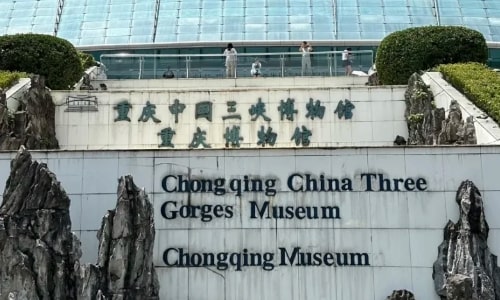
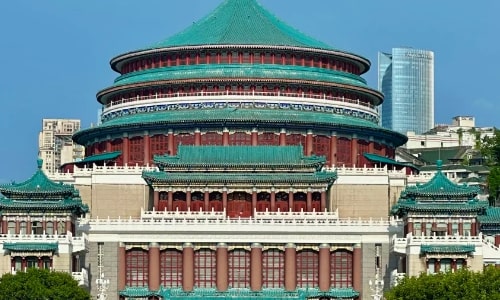
Next, a stroll through Longmen Hao Old Street, a restored historical district along the Yangtze River with a history dating back to the Ming Dynasty. Originally a bustling port for salt and silk trade, the street declined in the 20th century but was renovated in recent years to preserve its heritage. Today, it features stone-paved lanes lined with traditional courtyard houses, old teahouses, and vintage shops, many retaining their original wooden facades and carved doorframes. Key landmarks include the “Longmen Hao Post Office,” a 100-year-old building that once served as a communication hub for river merchants, and the “Former Residence of Lu Zuofu,” a prominent 20th-century industrialist who played a key role in developing Chongqing’s river transportation. The street also features murals depicting scenes of old port life—porters carrying cargo, boatmen repairing sails, and merchants haggling—and information boards explaining the history of each building. Local artisans sell handcrafted souvenirs like bamboo fans and embroidered handkerchiefs, while teahouses serve “Chongqing maofeng” tea, grown in the nearby Wushan Mountains.
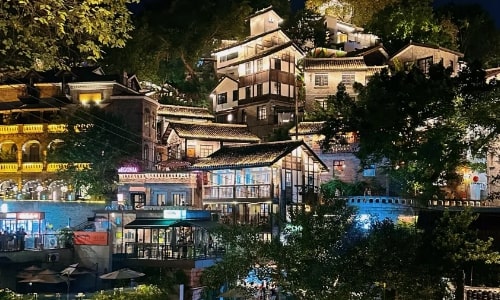
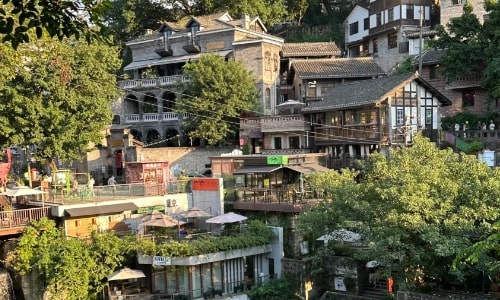
Lunch is served on the cruise ship, with a focus on Yangtze River delicacies. Recommendations include “steamed whitebait” (a small, silvery fish native to the river), “braised turtle with scallions,” and “river shrimp stir-fried with chili,” all prepared with fresh, locally sourced ingredients. Vegetarian options like “stir-fried water spinach” and “tofu with river mushrooms” are also available, highlighting the region’s fresh produce.
In the afternoon, the cruise docks for a shore excursion to Fengdu Ghost City, a 2,000-year-old cultural site perched on Ming Mountain overlooking the Yangtze River. Known as the “Gateway to the Underworld” in Chinese folklore, it is based on Taoist, Buddhist, and Confucian beliefs about the afterlife, serving as a symbolic representation of the journey from life to death. The site’s name derives from two Han Dynasty officials, Yin Changsheng and Wang Fangping, who were said to have become immortals here after practicing Taoism. The main attractions are arranged along a stone path leading up the mountain, starting with the “Gate of Hell,” a red-painted archway inscribed with Taoist incantations. Further up, the “Hall of Yama” (the god of the underworld) features life-size statues of Yama and his 10 judges, who are said to judge the souls of the dead. Other key sites include the “the Bridge of Forgetfulness” (Bridge of No Return), where souls are said to cross to the underworld after being judged, and the “18 Levels of Hell” exhibition, a series of dioramas depicting punishments for sins in the afterlife—though presented more as cultural education than horror. The site also features ancient temples, including the “Temple of Pure Yang” (a Taoist temple built in the Tang Dynasty) and the “Temple of Confucius,” reflecting the blend of religions in Chinese folk belief. The mountain’s summit offers panoramic views of the Yangtze River and the surrounding countryside, with information boards explaining the symbolism behind each structure and its role in traditional Chinese afterlife beliefs. After dinner, you retire to your cabin for the night as the ship continues its journey along the Yangtze River.
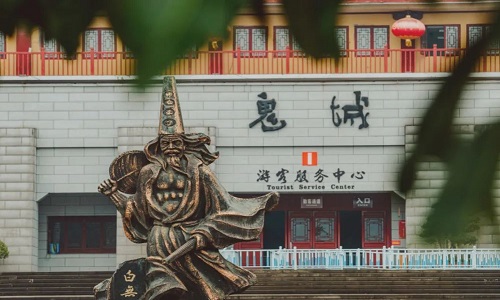
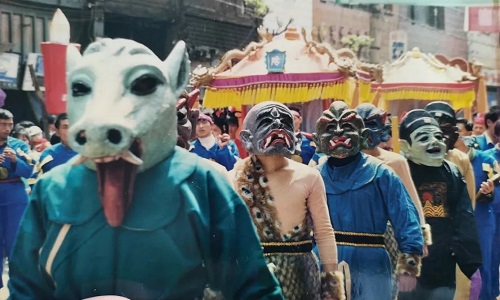
Travel Tips: Tomorrow’s tour of the Three Gorges and Shennv Stream involves disembarking onto small boats for the stream excursion. Please wear non-slip shoes and bring a light jacket, as the weather on the water can be cooler. It’s also advisable to bring a camera to capture the scenic landscapes, and a reusable water bottle for hydration.
Breakfast is served on board, with a selection of continental and Chinese options to enjoy alongside views of the Yangtze River’s early-morning mist, which clings to the water’s surface before burning off as the sun rises over the mountains. As the ship enters the Three Gorges—a 193-kilometer stretch consisting of Qutang Gorge, Wu Gorge, and Xiling Gorge—the guide will join you on the sundeck to provide context on this natural and cultural masterpiece, widely regarded as one of the world’s most scenic river valleys.
As the ship enters the Three Gorges—a 193-kilometer stretch consisting of Qutang Gorge, Wu Gorge, and Xiling Gorge—guide joins you on the sundeck to provide context on this natural and cultural masterpiece. Formed over millions of years by the Yangtze River cutting through the Wushan Mountains, the Three Gorges have been celebrated in Chinese poetry and art for millennia, with Li Bai and Du Fu, two of China’s greatest poets, penning verses about their grandeur. He points out the distinct features of each gorge: Qutang Gorge, the shortest at 8 kilometers, is the narrowest and most dramatic, with cliffs rising over 1,000 meters on both sides that seem to press in on the river; Wu Gorge, 46 kilometers long, is known for its twelve misty peaks, including the legendary Goddess Peak (Shennv Peak), a 1,020-meter-tall rock formation said to be a fairy transformed to watch over the river. He shares the myth behind Goddess Peak: the fairy Yao Ji helped Yu the Great control floods, then remained to protect sailors, her silhouette visible on the peak at dawn. Xiling Gorge, the longest at 66 kilometers, was once notorious for dangerous rapids and reefs, but the Three Gorges Dam has tamed its waters, making navigation safe while preserving its natural beauty.
Throughout the cruise, the guide points out historical landmarks hidden in the cliffs, such as the ancient plank roads—narrow paths carved into rock faces that were used for transportation and military purposes during the Han Dynasty. He explains that these roads, some over 2,000 years old, were built by hammering wooden stakes into the cliffs and laying planks across them, a testament to ancient engineering ingenuity. He also notes how the Three Gorges Dam has changed the landscape: the water level rose by over 100 meters after its completion in 2009, submerging some historical sites but also creating new scenic views, with islands emerging where mountains once stood.

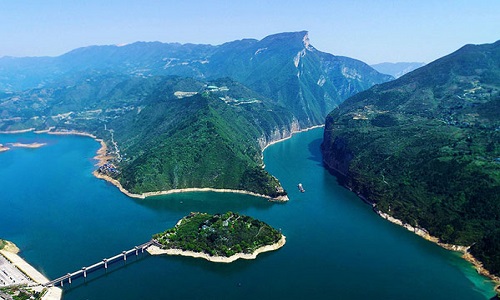
By midday, lunch on the cruise ship features Yangtze River specialties curated with guide’s input. Highlights include steamed yellow catfish, tender and flavorful with a light ginger sauce, and “san xia dou pi” (Three Gorges tofu skin rolls) stuffed with mushrooms and bamboo shoots, a dish inspired by local ingredients. Freshly brewed green tea from the Wushan Mountains complements the meal, its earthy notes mirroring the surrounding landscape.
In the afternoon, the ship docks for a shore excursion to Shennv Stream, a 15-kilometer tributary of the Yangtze River that cuts through the Wushan Mountains. The guide leads you to traditional wooden sampans (flat-bottomed boats) operated by local boatmen, explaining that this is the best way to experience the stream’s serene beauty. As the sampans glide through crystal-clear water, he points out the lush vegetation lining the banks—including ancient pine trees and wild azaleas—and the limestone cliffs with strange rock formations, such as “Elephant Trunk Hill” and “Lion Rock,” named for their resemblance to animals. He shares that Shennv Stream gets its name from a legend: seven fairies descended from heaven to bathe in the stream, leaving behind their clothing, which turned into colorful stones along the banks. The boatmen, who are descendants of the Tujia ethnic group, sing traditional folk songs in their native language, their voices echoing off the cliffs. The guide translates snippets of the songs, which tell stories of life along the river, love, and gratitude for the land. He also points out Tujia villages nestled in the valleys, with wooden stilt houses similar to those in Chongqing, and explains that the Tujia people have lived in the Three Gorges area for over 2,000 years, preserving their unique customs and crafts, such as batik and embroidery.
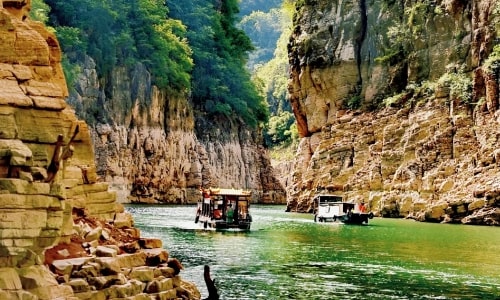
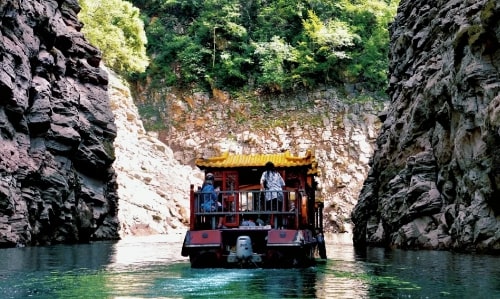
After returning to the cruise ship, the evening brings a special dinner featuring “yangtze bao yu” (steamed giant catfish) and “braised pork with chestnuts,” a hearty dish popular in the region. The guide joins briefly to share recommendations for viewing the night scenery of the gorges, where the moonlight reflects off the water and the cliffs are silhouetted against the sky. After dinner, you retire to your cabin, with the ship continuing its journey toward Yichang.
The cruise ship is about to arrive in Yichang, the eastern gateway to the Three Gorges. After disembarking, your guide will escort you to your pre-arranged transportation, assist with your luggage, and then depart for Zhangjiajie. The four-hour drive will take you through the Hunan countryside, where the landscape changes from river valleys to rolling hills dotted with rice paddies and bamboo forests. Your guide will show you the local farmhouses with tiled roofs and explain that Hunan is known as the "Land of Fish and Rice," and that agriculture has shaped the region's culture and cuisine for centuries. He will also share anecdotes about Zhangjiajie's history, noting that it was once a remote area inhabited by the Tujia and Miao ethnic groups and has become renowned in recent decades for its distinctive sandstone pillars.
Lunch is enjoyed at a roadside restaurant in a small town along the way, where the guide recommends local specialties: “hunan spicy chicken” (stir-fried chicken with chili peppers and fermented black beans) and “stir-fried bamboo shoots with pork,” both bursting with bold, spicy flavors characteristic of Hunan cuisine. He also suggests trying “sweet rice wine,” a mild, fermented drink that complements the spicy food.
Upon arriving in Zhangjiajie in the afternoon, the guide escorts you to your hotel, allowing time to settle in and rest after the journey. For dinner, he recommends a nearby restaurant specializing in Tujia cuisine, where you can enjoy “tujia bacon stir-fried with cabbage” and “fish head hot pot,” a local variation of Chongqing hot pot with a tangy broth. After dinner, he sends you back to the hotel, providing a brief overview of the next day’s exploration of Zhangjiajie National Forest Park.
Travel Tips: Tomorrow’s visit to Zhangjiajie National Forest Park involves extensive walking on uneven paths and stairs. Please wear comfortable, non-slip shoes and bring a backpack with water, snacks, and sunscreen. The park’s weather is changeable, so a lightweight rain jacket is also advisable. The guide will have a detailed map of the park and will adjust the route based on weather conditions.
After breakfast, your guide will meet you in the lobby before you depart for Zhangjiajie National Forest Park. Designated a UNESCO World Heritage Site in 1992, the park is known as the world's "center of quartz sandstone columnar landscape." After entering the park, your guide will lead you to the Bailong Elevator, stopping to explain its engineering marvel: this glass-walled vertical elevator clings to the 1,262-meter-high Qingyan Mountain, ascending 326 meters in just 66 seconds. As you ascend, your guide will point out the surrounding sandstone columns and explain their geological origins: 380 million years ago, this area was once an ancient ocean, where layer upon layer of quartz sandstone was formed through sedimentation. Over millennia, uplift of the Earth's crust, erosion by wind and rain, and the erosion of the Suoxi River have sculpted the rock into the more than 3,000 columns that stand today, some reaching 1,000 meters—taller than New York's Empire State Building. He highlighted Avatar Mountain (officially known as the South Pillar), a 150-meter-tall column topped with pine trees that served as the inspiration for the floating Hallelujah Mountain in James Cameron’s Avatar; a sign at its base commemorates the film’s impact on the park’s global reputation.
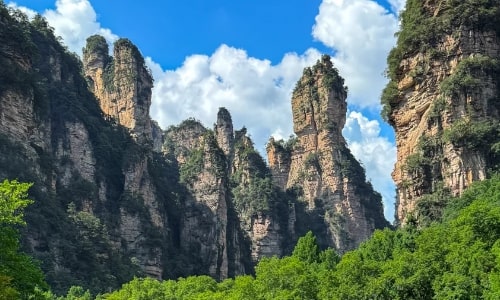
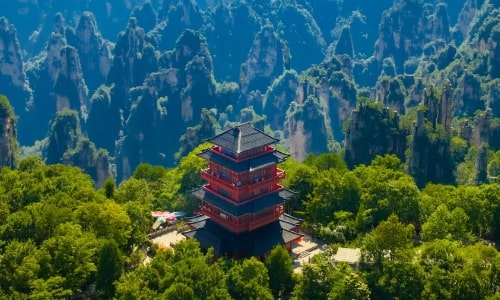
The first deep dive is Yuanjiajie, a plateau perched 1,074 meters above sea level, accessible via the elevator or a winding mountain road. The guide leads you along the “Yuanjiajie Plank Walk,” a wooden path hugging the cliff edge, and stops at the “First Bridge Under Heaven”—a natural stone arch spanning 20 meters between two pillars, 354 meters above the valley floor. He shares that the arch formed 20 million years ago when a limestone cave collapsed, leaving the remaining rock as a “sky bridge” that has stood firm through earthquakes and storms. Nearby, “Five Fingers Peak” rises in a cluster of five pillars, each with a distinct shape; the guide recounts a Tujia legend that the peaks are the handprints of a mountain god who pressed his palm into the earth to protect the local people from floods. As you walk, he points out the Zhangjiajie pine, a species unique to the area that grows horizontally from rock crevices, its roots twisting into stone to absorb moisture—an adaptation to the harsh, nutrient-poor environment. He notes that these pines are revered locally as symbols of resilience, often featured in Tujia embroidery and folk songs.
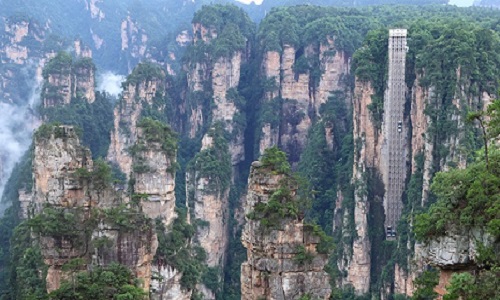
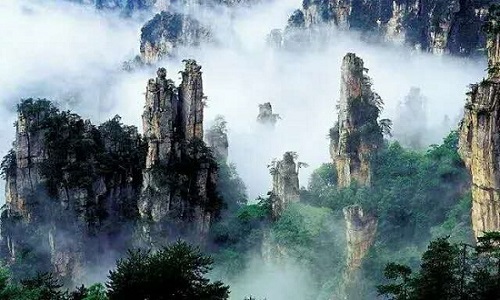
Lunch is served at a rustic restaurant within the park, where the guide recommends dishes crafted from mountain ingredients: “braised bamboo shoot soup” simmered with ham, its sweetness drawing out the bamboo’s earthiness, and “stir-fried wild mushrooms” foraged from the forest floor, paired with chili and garlic. He also suggests “honey-glazed chestnuts” roasted over charcoal, a seasonal treat that locals have enjoyed for centuries.
In the afternoon, the guide takes you to Tianzi Mountain, named after Xiang Dakun—a Tujia leader who declared himself “Tianzi” (Son of Heaven) during a rebellion against the Ming Dynasty in the 17th century. The mountain’s 1,262-meter summit offers 360-degree views of the park’s “Stone Forest,” a dense cluster of over 1,000 pillars that stretch to the horizon. He leads you to the “Cloudy Sea Viewing Platform,” explaining that the mist forms when warm air from the valley rises and meets cool mountain air, creating a surreal scene where pillars emerge like islands from a white ocean. On clear days, he points out “Xiang Dakun’s Spear,” a slender 200-meter-tall pillar said to resemble the leader’s weapon, and “Tianzi Pavilion,” a wooden structure built in traditional Tujia style, where locals once held ceremonies to honor their ancestors. He shares stories of Xiang Dakun’s rebellion: the Tujia people, who had lived in the mountains for millennia, fought against Ming tax collectors, using the terrain’s caves and cliffs as hideouts. Though the rebellion was crushed, Xiang Dakun’s legacy lives on in local festivals, such as the “Tujia New Year” (held in late January), where villagers dance the “hand-waving dance” and sing ballads about his courage.
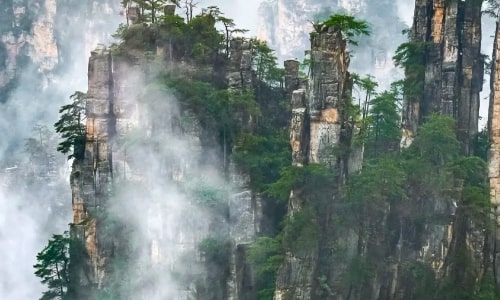
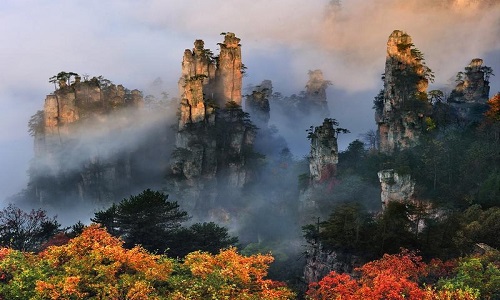
As dusk paints the pillars pink and gold, the guide leads you back to the park entrance, pointing out groups of macaques returning to their nests—these endangered primates are protected in the park, and he reminds you to keep a safe distance. For dinner, he suggests a family-run restaurant in the nearby town, specializing in “smoked Tujia bacon stir-fried with cabbage” (the bacon cured with pine smoke for months) and “fish head hot pot” with a tangy tomato broth, a milder alternative to Chongqing’s spicy version. After dinner, he escorts you back to the hotel, reminding you to pack light for the next day’s flight.
After breakfast at the hotel, your guide will take you to the Zhangjiajie Grand Canyon, a 6.8-kilometer-long gorge carved by the Qingjiang River, a tributary of the Yangtze River. Quite different from the national park, it is famous for its waterfalls, clear pools, and lush vegetation.
As you descend into the canyon via stone stairs, the guide explains its formation: unlike the park’s pillars, the canyon was shaped by continuous erosion from the Qingjiang River, which wore away softer sandstone layers to create steep cliffs and narrow gorges. He points out “Silk Waterfall,” a 100-meter-tall cascade that flows gently over moss-covered rock, its name derived from its resemblance to a sheet of silk fluttering in the wind. Further along, “Jade Pool” shimmers with emerald water, fed by underground springs; the guide notes that local villagers once used the pool’s water for drinking and irrigation, believing it had healing properties. He also highlights the Chinese dove tree, a national protected species with white bracts that look like doves in flight—native to the Zhangjiajie area, it’s often called the “living fossil” for its 100-million-year evolutionary history.
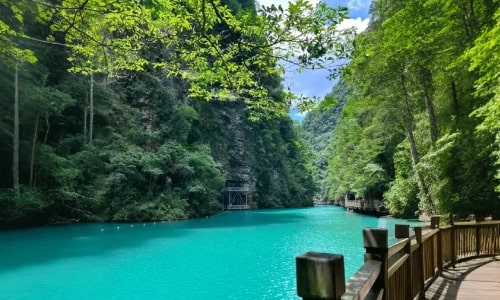
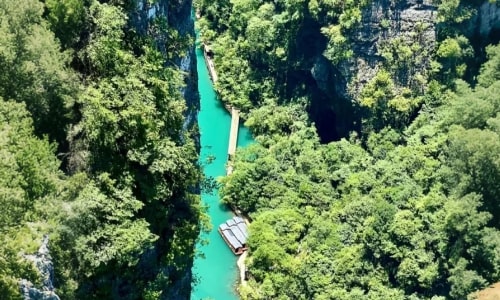
The canyon’s crown jewel is the Glass Bridge, a 430-meter-long, 6-meter-wide structure suspended 300 meters above the valley floor, made of 99 panes of reinforced glass each capable of supporting 3 tons. The guide shares that when it opened in 2016, it set four world records: longest glass bridge, highest glass bridge, longest glass bridge with a walkway, and highest bungee jump platform (though bungee jumping is currently suspended). As you step onto the bridge, he reassures you of its safety—engineers tested it with 800 people (its maximum capacity) and even drove a car across it. The view is breathtaking: the canyon stretches below, with the Qingjiang River winding like a silver ribbon, and the surrounding mountains covered in pine forests. He points out “Lover’s Rock,” two pillars leaning against each other at the canyon’s edge, a local symbol of eternal love—couples often take photos here to honor their relationships.
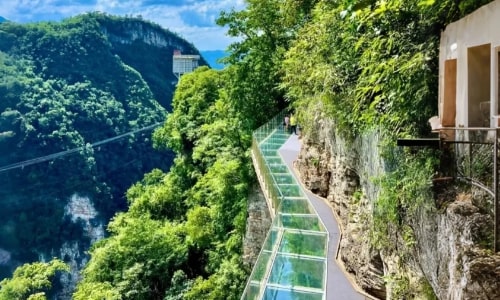
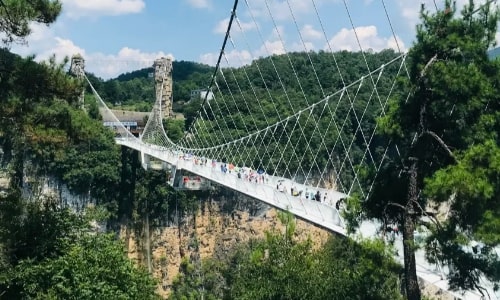
After exploring the canyon, the guide escorts you to Zhangjiajie Hehua Airport, assisting with luggage check-in and navigating security. The 2-hour flight to Shanghai offers aerial views of China’s eastern plains: patchwork farmlands, bustling cities, and the Yangtze River delta glinting in the sun. Upon landing, he meets you at the airport and leads you to your hotel. For dinner, he recommends a nearby Shanghai-style restaurant, where you’ll savor “xiao long bao” (soup dumplings) with pork or crab filling—he explains that the key to good xiao long bao is the thin dough and juicy broth, made by simmering pork skin until it gelatinizes, then mixing it into the filling. Another highlight is “hong shao rou” (braised pork belly), cooked with soy sauce, sugar, and rice wine until it’s tender enough to melt in your mouth. After dinner, he walks you back to the hotel, pointing out Shanghai’s neon-lit skyline and sharing a preview of the next day’s mix of historic gardens and modern landmarks.
After breakfast, proceed to Yuyuan Garden. Built between 1559 and 1577 by Ming Dynasty official Pan Yunduan for his father, Yuyuan Garden is one of Shanghai's last remaining classical gardens. Its name, "Yiyuan," reflects Pan's wish for his father to enjoy his later years in peace and contentment. Your guide will lead you through the "Yiyuan Gate" (the garden's main entrance) and explain its design principles: "borrowing scenery" (using distant views to expand the garden's visual area) and "hiding and revealing" (using walls, rocks, and plants to create a sense of mystery). Your guide will point out the "Exquisite Jade Stone," a five-ton limestone boulder transported from Taihu Lake during the Ming Dynasty. It has 72 holes in it, and if you light a candle inside, the rock glows like a lantern. The nearby "Yuhua Hall" features intricately carved wooden dragon and phoenix carvings, symbolizing imperial power and marital harmony. The "Lotus Pond," with its koi carp and willow-lined pond, explains that this was once where the Pan family went boating. The guide also explains the garden’s turbulent history: it was damaged when British troops occupied Shanghai during the Opium War (1839-1842), and was later restored in the 20th century – today it is on the UNESCO World Heritage candidate list, recognized for its important role in preserving Chinese garden culture.
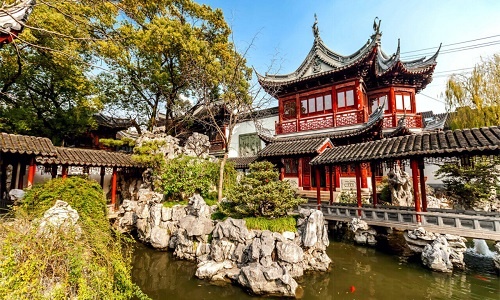
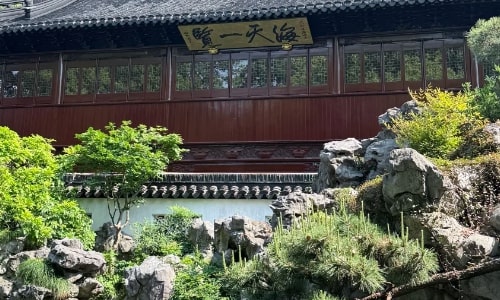
Adjacent to the garden is Yuyuan Bazaar, a 400-year-old market that has served as a commercial hub since the Ming Dynasty. Its narrow lanes are lined with red lanterns and shops offering traditional crafts. There are hand-painted fans, including those from a shop with 120 years of family operation; jade carvings, reflecting Shanghai's long history of jade craftsmanship; and “tanghulu,” a candied hawthorn snack dating back to the Song Dynasty. The Nanxiang Steamed Bun Restaurant, founded in 1900, is renowned for its “nanxiang xiao long bao.” Each dumpling features 18 pleats sealed using a special folding technique. Near the bazaar's center stands the City God Temple, a Taoist temple constructed during the Yuan Dynasty (1271-1368) to honor the City God, the deity protecting Shanghai's residents. The temple's roof tiles, adorned with colorful carvings of dragons and tigers, are a notable feature. Locals continue to visit for prayers of good fortune, and during the Lunar New Year, the temple hosts a lively fair with lion dances and lantern displays.
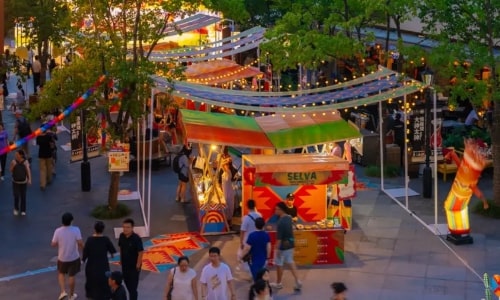
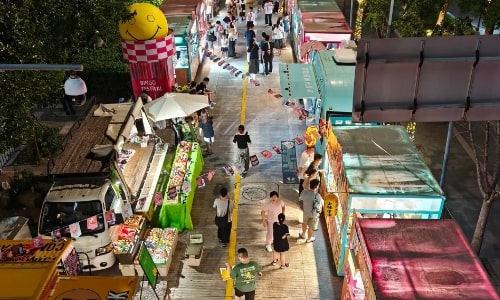
Lunch is enjoyed in the bazaar area, at a restaurant specializing in “Shanghai fried noodles” (tossed with soy sauce, scallions, and pork) and “braised eel with rice cakes”—the guide notes that eel is a seasonal delicacy in Shanghai, prized for its tender meat and health benefits. For dessert, he recommends “osmanthus cake,” made with glutinous rice, sugar, and osmanthus flowers, which has a fragrant, floral flavor.
Next, the guide takes you to the Old French Concession, a 15-square-kilometer district that was a French colonial enclave from 1849 to 1943. As you walk along Huaihai Road, lined with sycamore trees, he points out the architectural diversity: French Renaissance villas with manicured gardens, Gothic Revival churches (like St. Ignatius Cathedral, built in 1910 with stained-glass windows imported from France), and Art Deco buildings (such as the Peace Hotel’s sister property on Fuxing Road). He shares that the concession was once a haven for foreigners and wealthy Chinese—during the 1920s and 1930s, it was home to writers, artists, and revolutionaries, including Sun Yat-sen, who lived in a French-style villa on Xiangshan Road. The guide leads you to a historic café, “La Seine,” founded in 1935, where you’ll sip coffee and watch locals stroll by—“this area hasn’t changed much in 80 years,” he says. “It’s where Shanghai’s past and present meet.” He also points out trendy boutiques and art galleries tucked into old villas, noting that young Shanghainese are reviving the district’s cultural scene while preserving its heritage.
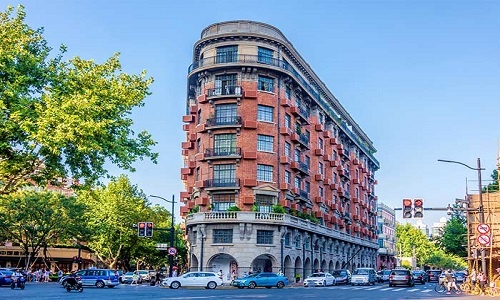
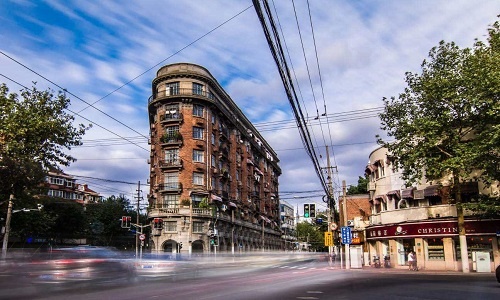
In the afternoon, you visit The Bund, a 1.5-kilometer waterfront promenade along the Huangpu River, often called “Shanghai’s Gallery of World Architecture.” The guide walks you along the promenade and identifies the 52 buildings lining it, built between 1906 and 1937 in styles ranging from Neoclassical to Art Deco. Highlights include the HSBC Building (1923), with its grand dome and mosaic murals depicting 12 countries’ currencies, once called “the most beautiful building east of the Suez Canal”; the Custom House (1927), with a clock tower modeled after London’s Big Ben, whose chimes still ring every 15 minutes; and the Peace Hotel (1929), an Art Deco icon with a green pyramid roof and a jazz band that’s played since the 1930s. He explains that the Bund was once Asia’s financial capital—banks from Britain, France, and the U.S. had headquarters here, and Shanghai was known as the “Paris of the East.” Across the river, the Shanghai Tower (632 meters tall) and Oriental Pearl Tower (468 meters tall) rise into the sky, a stark contrast to the Bund’s colonial architecture.
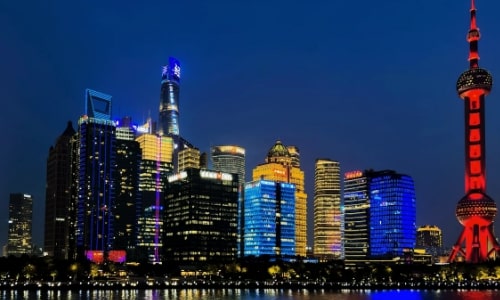
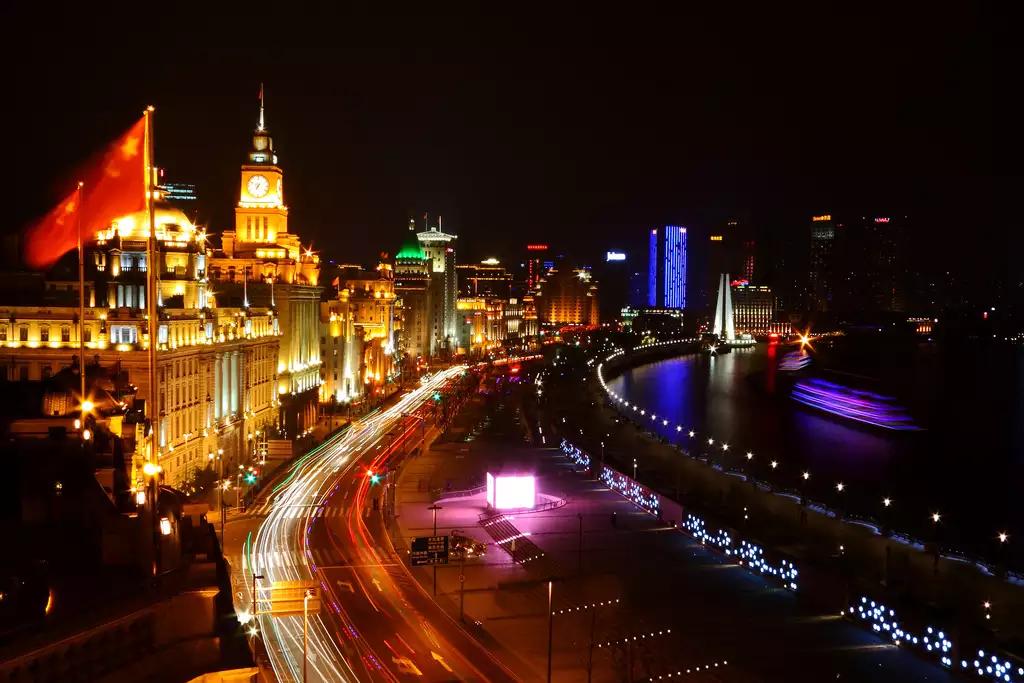
The final stop is Zhujiajiao Water Town, a 1,700-year-old canal town 40 kilometers west of Shanghai, often called the “Venice of the East.” Founded during the Three Kingdoms period (220-280 CE), it thrived as a trading hub during the Ming and Qing dynasties, with merchants using its canals to transport rice, silk, and tea. The guide leads you to a wooden gondola (called a “wu peng chuan”) and explains that the town’s 36 bridges and 9 long canals are still used by locals—many residents live in stilt houses along the water and travel by boat to buy groceries. He points out key landmarks: the Fangsheng Bridge (the town’s oldest bridge, built in 1571 with five arches), the Kezhi Garden (a classical garden with a lotus pond and bamboo groves), and the Zhujiajiao Museum, which showcases ancient tools, pottery, and clothing from the town’s history. As you glide along the canals, he points out women washing clothes in the water (a tradition that’s fading but still practiced by elders) and shops selling “zongzi” (glutinous rice wrapped in bamboo leaves) and “rice wine” fermented in earthen jars. He shares that Zhujiajiao escaped modernization because it was isolated by farmlands until the 1990s.
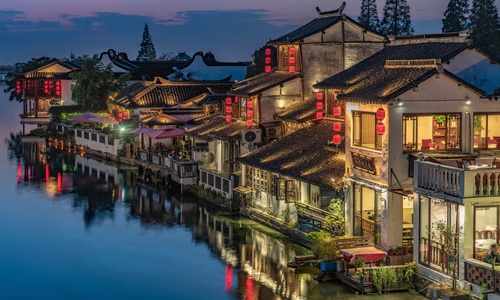
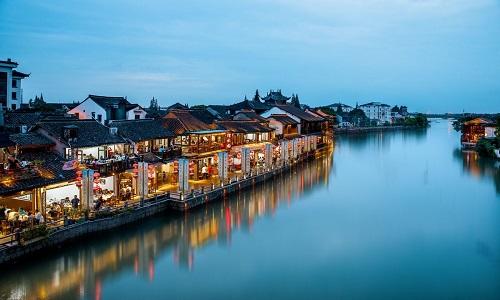
For dinner, the guide recommends a canal-side restaurant in Zhujiajiao, where you’ll enjoy “steamed river crab” (in season) and “braised fish with soy sauce”—the fish is caught fresh from the canals that morning. After dinner, he drives you back to your Shanghai hotel, pointing out the city’s glittering night lights as you enter the downtown area.
The final day of your unforgettable adventure through China has arrived, bringing a close to a journey filled with iconic sights and cherished moments. Your time in Beijing allowed you to walk the storied grounds of the Forbidden City and stand atop the awe-inspiring Great Wall, absorbing centuries of history. Over in Xi’an, the mysterious Terracotta Warriors revealed ancient secrets, while Chongqing’s bustling streets immersed you in rich local flavor and energy. Cruising along the Yangtze River gave you a new way to admire China’s scenic wonders, and the towering sandstone formations of Zhangjiajie left a lasting impression of nature’s grandeur. Wrapping things up in Shanghai, the city’s dynamic blend of old and new offered a fitting finale to your adventure. As you prepare for your journey home, a sense of contentment settles in—this trip, full of cultural insight and spectacular views, has made a lasting mark. While the tour ends today, the experiences and stories you’ve gathered will continue to resonate well into the future.
Price Per Person in US Dollars
Personalized Travel Consultant
Experience the best of China with our expert travel consultants by your side. With years of local tourism experience, they are not only professional and knowledgeable but also deeply committed to making your trip unforgettable. Your dedicated consultant will craft a bespoke tour plan tailored to your unique interests, schedule, and budget, offering you the utmost flexibility. From the moment you start planning until the end of your journey, they will be in touch, ensuring every detail is perfect and that your trip runs smoothly.
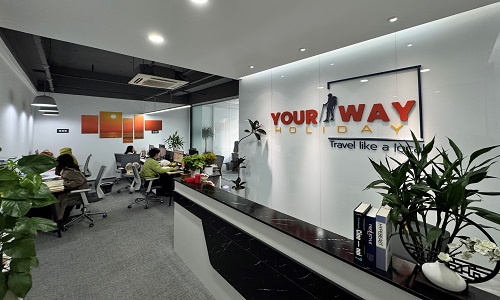
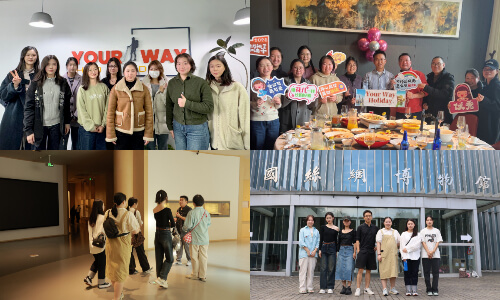
Exceptional Local Guides
Discover it through the eyes of our exceptional local guides. All certified and experienced, they are passionate about sharing their deep knowledge of attractions, history, and culture. Whether you're interested in hidden gems or popular sites, they know the best places to visit. They can recommend top local restaurants, unique shopping spots, and must-see shows. Beyond just guiding, they provide enriching insights into the history, customs, and authentic daily life, making your experience truly immersive.
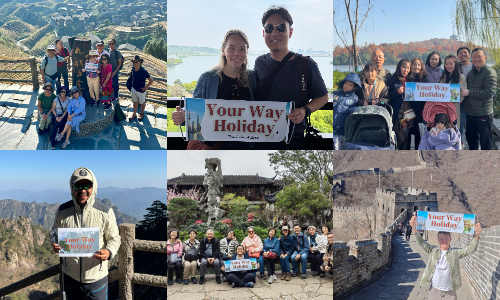
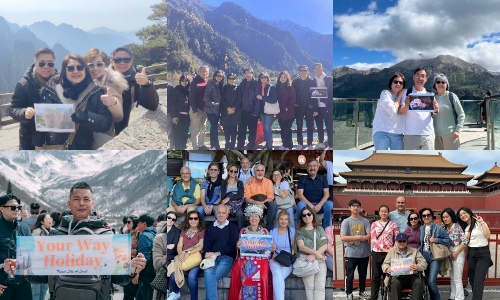
Premium Private Transportation
Travel in comfort and style with our premium private transportation. We offer a fleet of air-conditioned, non-smoking, clean, and meticulously maintained vehicles, all less than four years old. Our professional drivers, all locals with over a decade of driving experience, are friendly, courteous, and dedicated to your safety and comfort. Depending on your group's size, we provide a range of vehicles, including sedans, SUVs, business vans (MPVs), and spacious buses, all with ample luggage space.
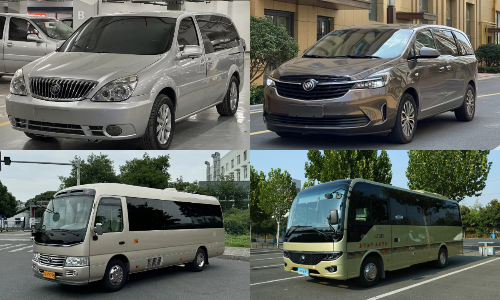

Authentic Dining Experiences
We prioritize genuine local culinary experiences over pre-arranged tourist restaurants. Our local guides will recommend the best local restaurants where you can savor authentic flavors. This approach ensures you enjoy the freshest, most authentic meals, tailored to your preferences, and experience the true essence of the local cuisine. Whether your dietary needs are vegetarian, Muslim, Chinese, Western, Jewish, or Indian, we have excellent options to make every meal a delightful part of your journey.
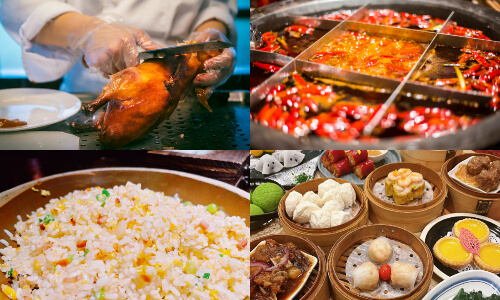
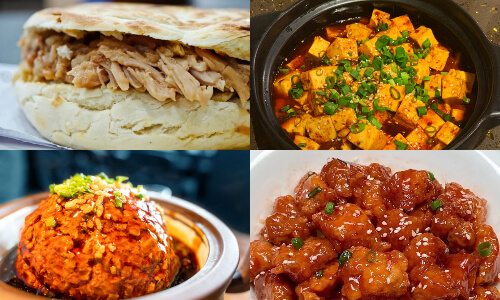
Duration:8 Days, 7 Nights
Attractions(Cities):Shanghai, Xian, Beijing
Tour Style:Ultimate 8-Day Private China Tour: Beijing, Xi'an & Shanghai with High-Speed Train Adventures is the ideal way for first-time visitors to discover the best of China. This private tour seamlessly connects the vibrant metropolis of Shanghai, the ancient wonders of Xi'an, and the cultural riches of Beijing. In Shanghai, marvel at the stunning skyline, explore the historic French Concession, and wander through the peaceful Yu Garden. In Xi'an, witness the world-famous Terracotta Warriors and enjoy a fun family bike ride along the ancient City Wall. Finally, in Beijing, step back in time with visits to the majestic Forbidden City, walk the iconic Great Wall, and explore the tranquil Temple of Heaven. Experience the convenience and comfort of high-speed bullet trains traveling between cities, all while being guided by an expert who brings China’s rich culture, history, and modern marvels to life. This tour offers a perfect blend of adventure and relaxation, making it an unforgettable journey through China’s highlights.
Duration:10 Days, 9 Nights
Attractions(Cities):Beijing, Xian, Guilin, Shanghai
Tour Style:The best China tours for families come to life with this 10-Day Best of China Family Tour, offering a perfect blend of history, culture, and adventure in Beijing, Xi'an, Guilin, and Shanghai. In Beijing, families can marvel at the grandeur of the Forbidden City, stroll through Tiananmen Square, and hike the awe-inspiring Great Wall, creating lasting memories. Next, travel to Xi'an, where you’ll cycle along the ancient City Wall, discover the Terracotta Warriors, and immerse in the vibrant Muslim Quarter. In Guilin, take a scenic Li River cruise, wander through the beautiful countryside, and explore the fascinating Reed Flute Cave. Finally, in Shanghai, blend the old and new with visits to the Yu Garden, the Bund, and enjoy family fun at Shanghai Disneyland. A peaceful boat ride through a charming water town offers the perfect way to unwind. This all-inclusive family tour ensures a seamless experience with accommodations, expert guides, domestic flights, meals, and transport, making it the perfect family adventure through China’s most iconic sights.
Duration:21 Days, 20 Nights
Attractions(Cities):Beijing, Xian, Guilin, Kunming, Dali, Lijiang, Shangri-La, Chongqing, Yangtze River Cruise, Shanghai
Tour Style:Book this 21-day China private tour and experience the best China tours across the country's most iconic destinations, including scenic Yunnan, the majestic Yangtze River, Beijing, Xi'an, Guilin, Kunming, Dali, Lijiang, Shangri-la, Chongqing, Yichang, and Shanghai. Our professional tour guide will lead you through the diverse and rich cultures of southwest China, highlighting the amazing ethnic customs and traditions. Along the way, you'll enjoy some of the best China tours, taking in the breathtaking landscapes like the Li River in Guilin and a relaxing voyage along the Yangtze River. This tour offers a perfect combination of China’s deep historical roots, including the ancient wonders of Beijing and Xi'an, with the stunning natural beauty of Lijiang, Dali, and Shangri-la. From the timeless heritage to the awe-inspiring sceneries, this China private tour is the ultimate way to explore China’s most majestic and culturally significant spots, offering a truly unforgettable experience.
Duration:24 Days, 23 Nights
Attractions(Cities):Shanghai, Suzhou, Huangshan, Hangzhou, Guilin, Lijiang, Chengdu, Xi'an, Beijing
Tour Style:This 24-day private China tour offers an unforgettable journey through China’s most iconic cities and scenic wonders, from the futuristic skyline of Shanghai to the imperial majesty of Beijing. Along the way, you’ll stroll through Suzhou’s elegant classical gardens, hike the misty peaks of Huangshan, sip fragrant Dragon Well tea beside Hangzhou’s tranquil West Lake, cruise past dramatic karst landscapes on the Li River in Guilin, and wander the storybook lanes of Lijiang Old Town. In Chengdu, meet the beloved giant pandas and dive into Sichuan culture, while Xi’an reveals the awe-inspiring Terracotta Warriors and ancient city walls. Designed for comfort and depth, this immersive China holiday package includes knowledgeable private guides, seamless transfers, and handpicked accommodations, ensuring every step of your adventure is smooth, enriching, and unforgettable. Perfect for travelers seeking culture, nature, and authentic local experiences, this curated journey lets you discover the best of China in style and ease.
Duration:6 Days, 5 Nights
Attractions(Cities):Beijing, Xian
Tour Style:If you want to truly experience China, the Beijing Xi'an Tour Packages should be your top priority. This 6-Day Beijing & Xi'an Tour is an ideal option for visitors who want to explore the essence of Chinese culture and history in a short time. With Beijing Xi'an Tour Packages, you'll be accompanied by a knowledgeable guide who will help bring ancient Chinese history to life. Starting in Beijing, the capital of China for centuries, you’ll visit iconic landmarks like the Great Wall, the Forbidden City, and the Temple of Heaven. Then, travel to Xi'an, the ancient capital of China and home to the famous Terracotta Warriors. These two ancient cities offer a fascinating journey through China’s imperial past.The Beijing Xi'an Tour Packages give you a deeper understanding of Chinese history and culture, all while enjoying the convenience and comfort of high-speed train travel between the two cities. Whether you’re interested in ancient history, stunning architecture, or the rich cultural heritage, this tour offers an unforgettable experience.
Wechat: Chinaprivatetour
24 Hours Hotline:
+86 137-3541-1378
(Your Privacy is Protected)
1 to 1 tailor-made service from our professional travel advisors for the most sophisticated
Constantly excellent reviews for attraction, hotel and service Competitive price
Local experts provide quality tours Best selected knowledgeable local guides Authentic local restaurants
7*24 hours available to create you a worry-free tour. No Hidden Fees and absolutely no pressure to buy. Secured








I can’t recommend this tour enough—Your Way Holiday nailed every detail. Starting in Beijing, we loved wandering Nanluoguxiang Hutong after exploring the Temple of Heaven, savoring jianbing from a local stall (Andy’s tip!). The bullet train to Xi’an was comfortable, and Mei’s tour of the Ancient City Wall at dusk was magical. Chongqing’s chaos was thrilling: Liziba Station (train through a building!) and Hongya Cave’s neon lights were unforgettable. The Yangtze Cruise let us relax between cities, and the Zhangjiajie Grand Canyon’s glass bridge was a fun adventure. Shanghai’s Zhujiajiao Water Town was a peaceful end to the trip, with Autumn guiding us to a cozy teahouse. Logistics were flawless—no stress with trains or flights. This is the best way to see China’s diversity.
This tour isn’t just a trip—it’s a rollercoaster of contrasts that left me awe-struck at every turn, thanks to Your Way Holiday’s bold itinerary design. Beijing’s guide Ryan set the bar high: he led us to a quiet section of Badaling Great Wall at sunrise, where we watched the mountains glow pink without the usual crowds, then shifted to the Forbidden City’s imperial grandeur by afternoon—his stories of emperors and rebels made the red walls feel alive.
The real adventure began in Zhangjiajie. Our local guide Lin was a former park ranger, and he took us off the tourist trails in Zhangjiajie National Forest Park—we hiked through misty valleys, crossed narrow plank roads clinging to quartz sandstone pillars, and even spotted wild macaques. Yuanjiajie’s “Avatar Mountains” were surreal, but Lin’s favorite spot (a hidden viewpoint overlooking Tianzi Mountain) was the highlight—we sat on a rock, sipping hot tea, as clouds rolled over the peaks.
Chongqing’s chaos was a thrilling contrast: Ryan (who joined us for the city tour) navigated the hilly streets like a pro, taking us to Liziba Station to watch the train pass through a building (mind-blowing!) and Hongya Cave at night, where the lit-up wooden structures looked like a fairy-tale village. The Yangtze River Cruise was the perfect buffer—we relaxed on the deck, watching gorges tower above, and the shore excursion to Fengdu Ghost City added a spooky, fascinating layer of Chinese folklore.
From the Great Wall’s man-made marvels to Zhangjiajie’s natural wonders, this tour balances adventure and culture perfectly. Guides were as passionate about hiking trails as they were about history, and logistics (trains, flights, transfers) were seamless. I came home with blisters on my boots and memories that’ll last a lifetime—10/10 for anyone who wants to see China’s wild side and its rich heritage.
We booked a private tour with YourWayHoliday in China. We were impressed by their responsiveness and flexibility. Our tour advisor, Sam, tailored the itinerary to our needs, which included Beijing, a Yangtze River cruise, Zhangjiajie, and Shanghai. Traveling in July during China's school holidays meant encountering queues, but the patience and politeness of the people made the experience enjoyable. YourWayHoliday enhanced our journey with their attention to our preferences and adaptability.
The tour kicked off in Beijing, where we were greeted by the awe-inspiring Great Wall at Mu Tian Yu. The well-maintained paths and picturesque watchtowers made our ascent a breeze, and the panoramic views of the rolling hills and lush countryside were simply breathtaking. It was a thrilling introduction to China's rich history and natural beauty.
Our journey then led us to the majestic Yangtze River, where we embarked on a cruise through the Three Gorges. The pristine waters flanked by towering cliffs and terraced fields created a mesmerizing tableau. The itinerary cleverly balanced shore excursions, allowing us to explore hidden villages, ancient temples, and serene pagodas along the way.
Zhangjiajie, the real-life inspiration for the Avatar film, was undoubtedly a highlight. The meticulously planned hikes and cable car rides transported us to the heart of Pandora-like landscapes. The intricate sandstone pillars and lush foliage seemed otherworldly, and our guide's insights into the area's geological wonders added depth to our experience.
As we arrived in Shanghai, the tour seamlessly transitioned from natural wonders to metropolitan marvels. The city's glittering skyline, modern architecture, and bustling streets offered a striking contrast to the serene landscapes we had explored earlier.
Throughout this journey, our expert guide was a beacon of knowledge and professionalism. Their ability to share historical and cultural insights was truly impressive, enriching each destination with fascinating stories and anecdotes. They not only led us through the itinerary but also made sure we absorbed the essence of each place we visited.
From the well-maintained paths of the Great Wall to the surreal beauty of Zhangjiajie and the dynamic streets of Shanghai, every moment was carefully curated for an unforgettable experience. I wholeheartedly recommend this tour to anyone seeking a deep and immersive exploration of China. It's a journey that will forever occupy a special place in my heart.